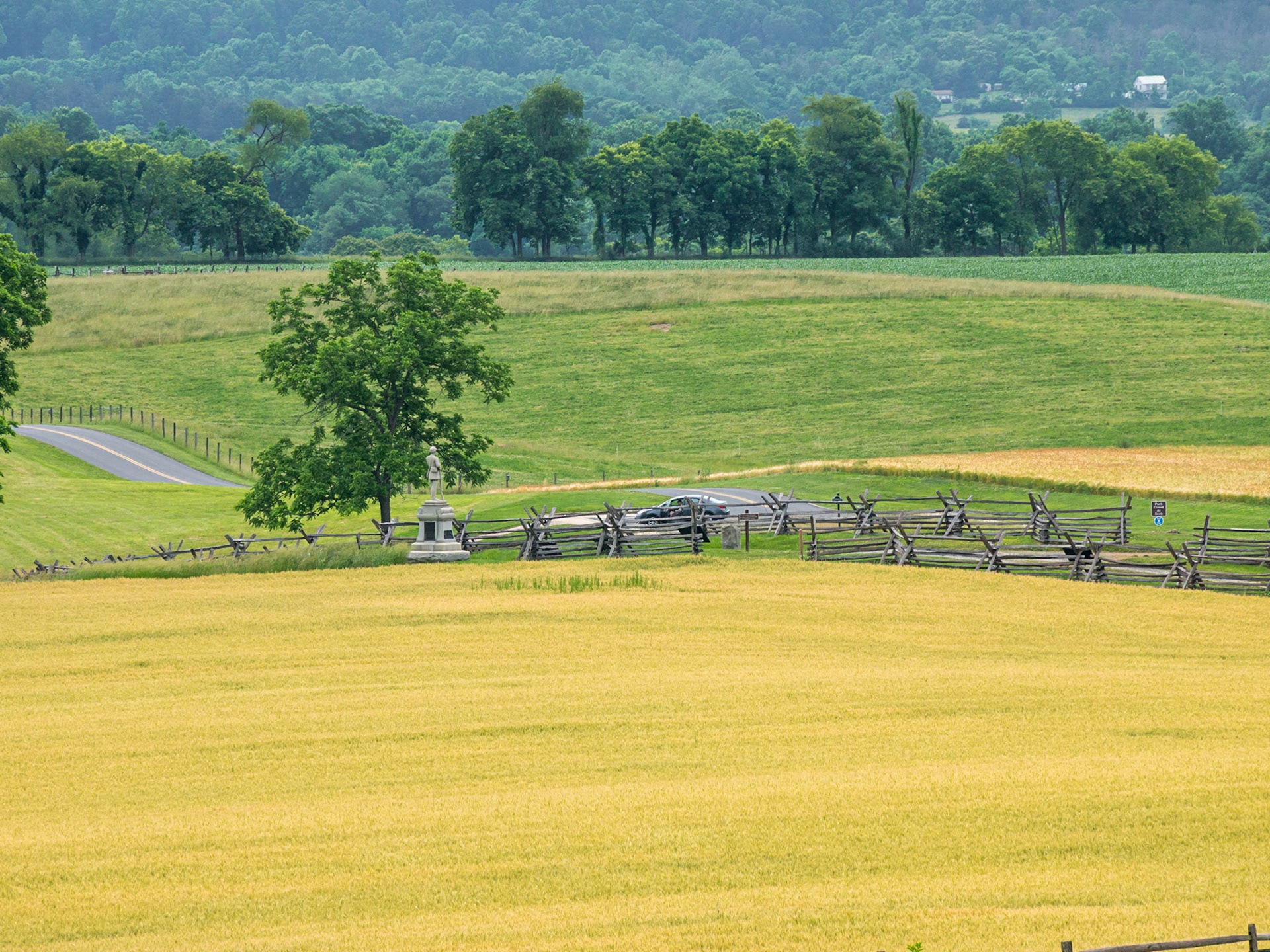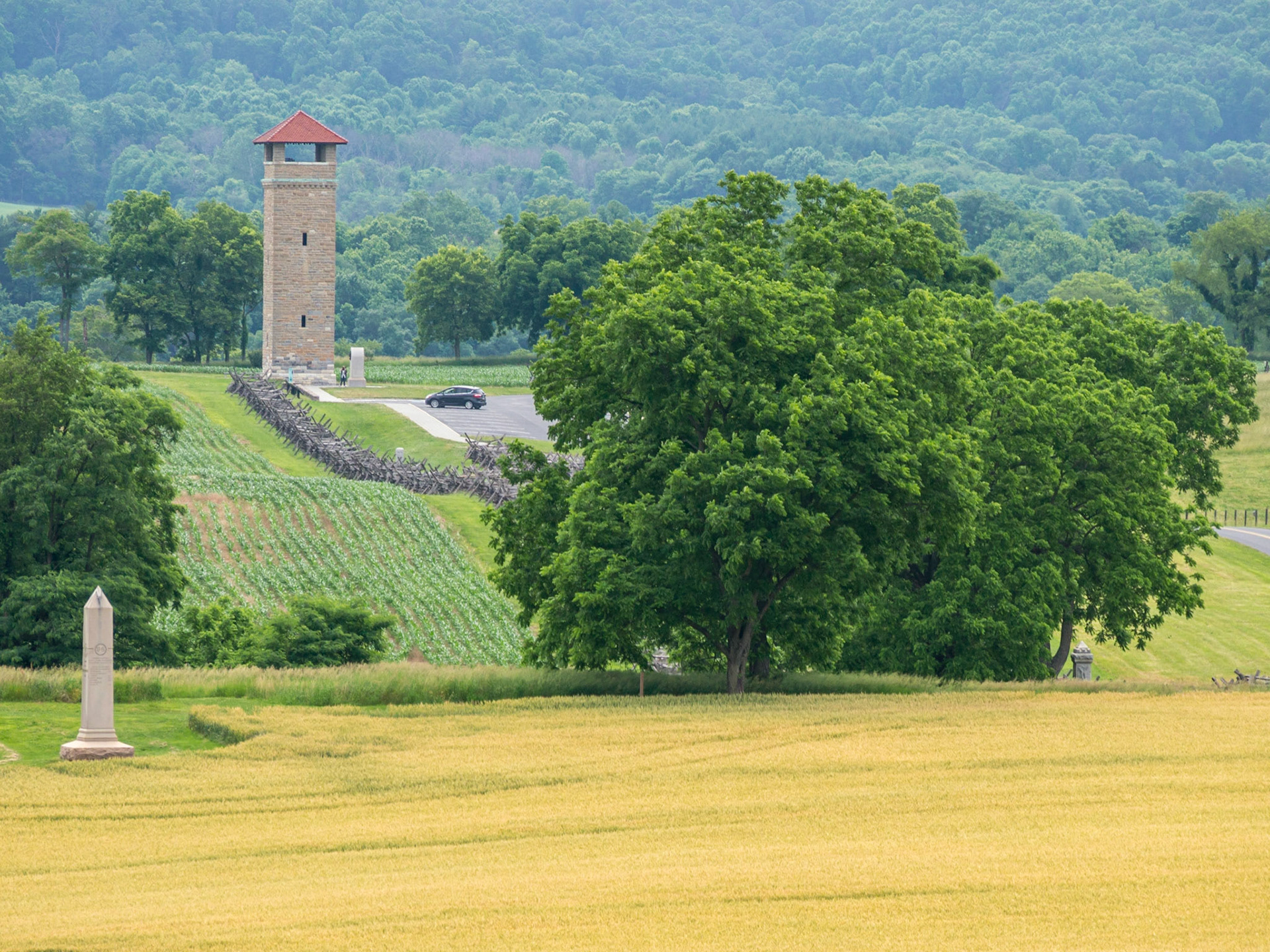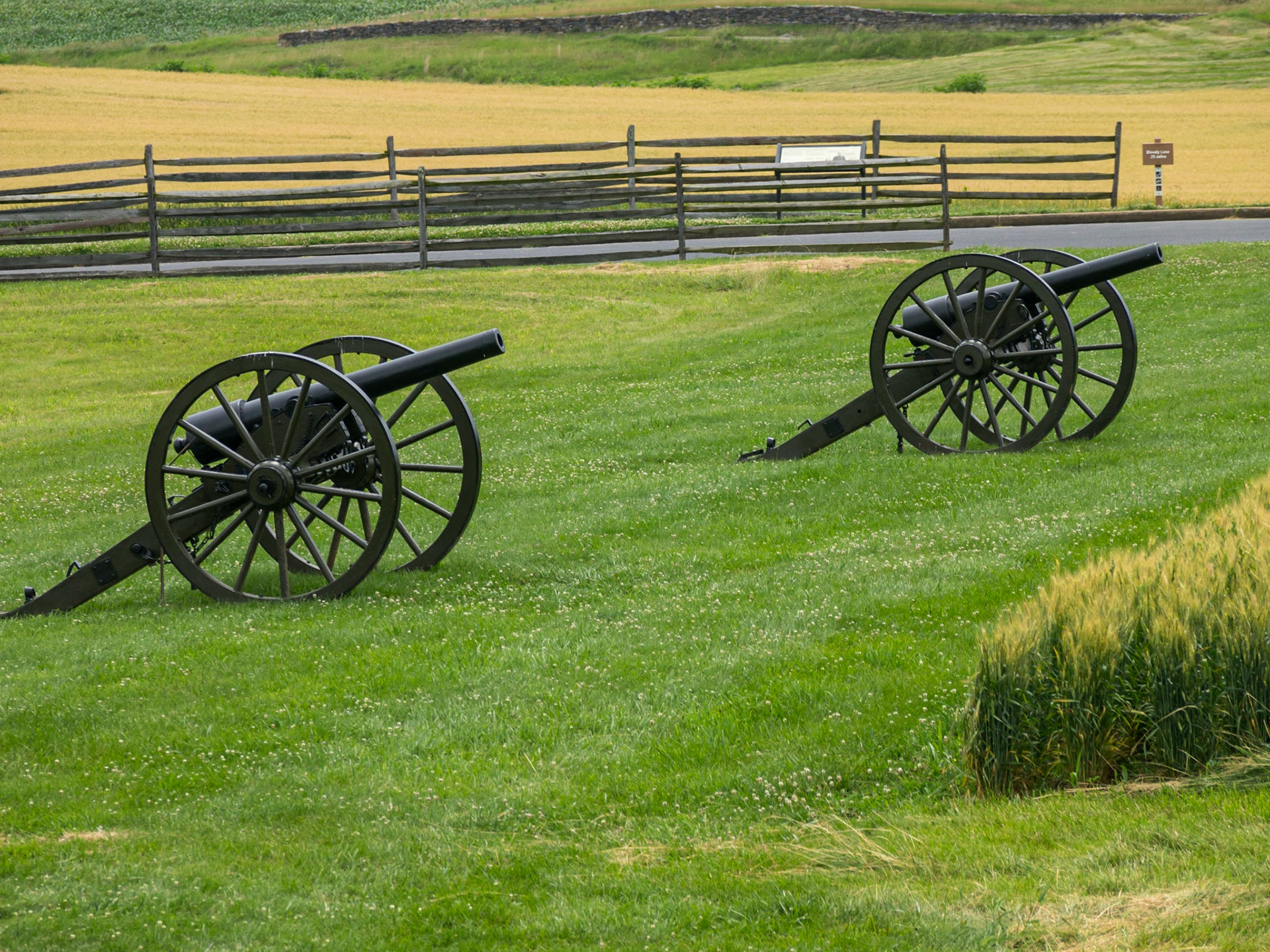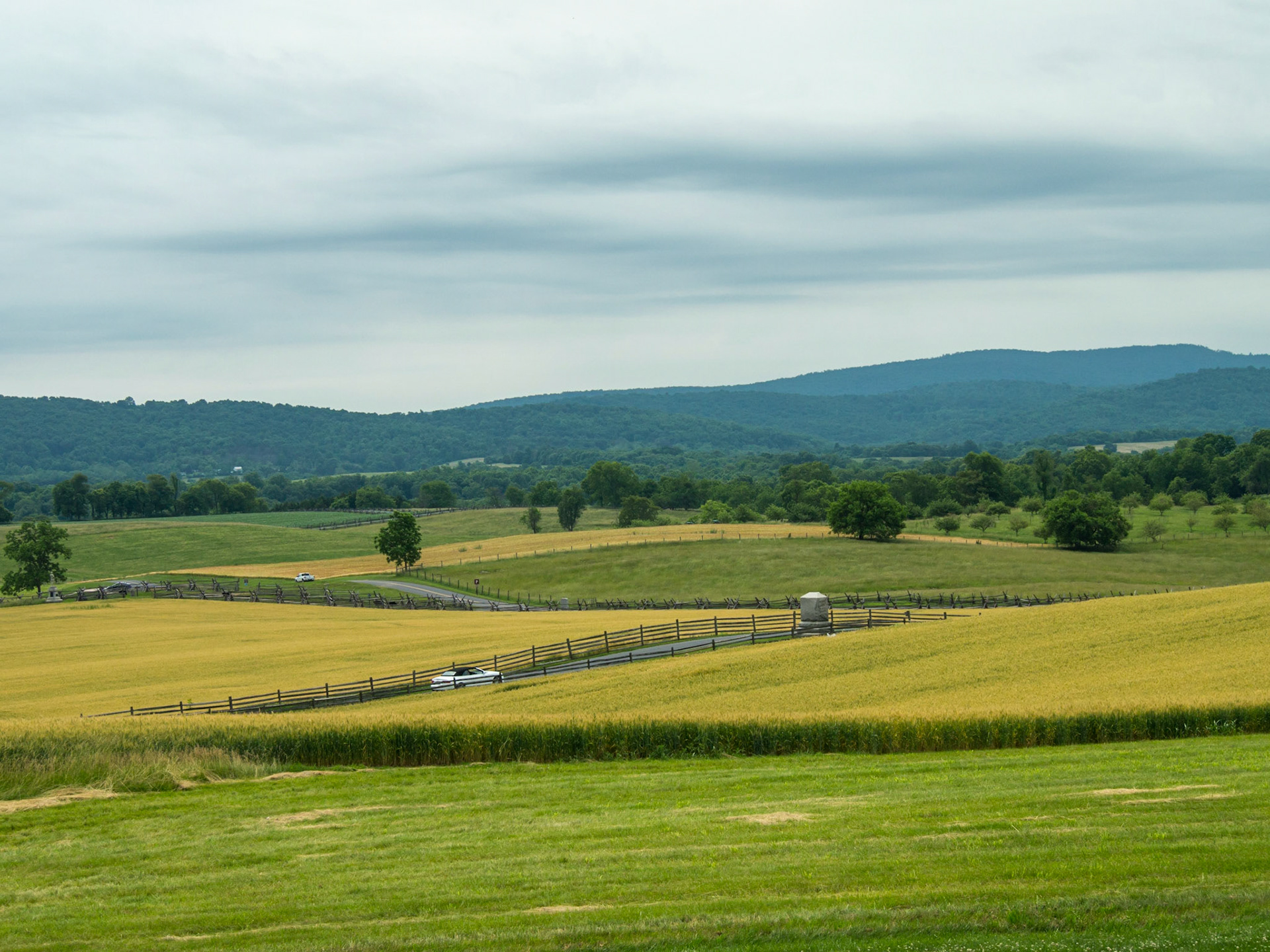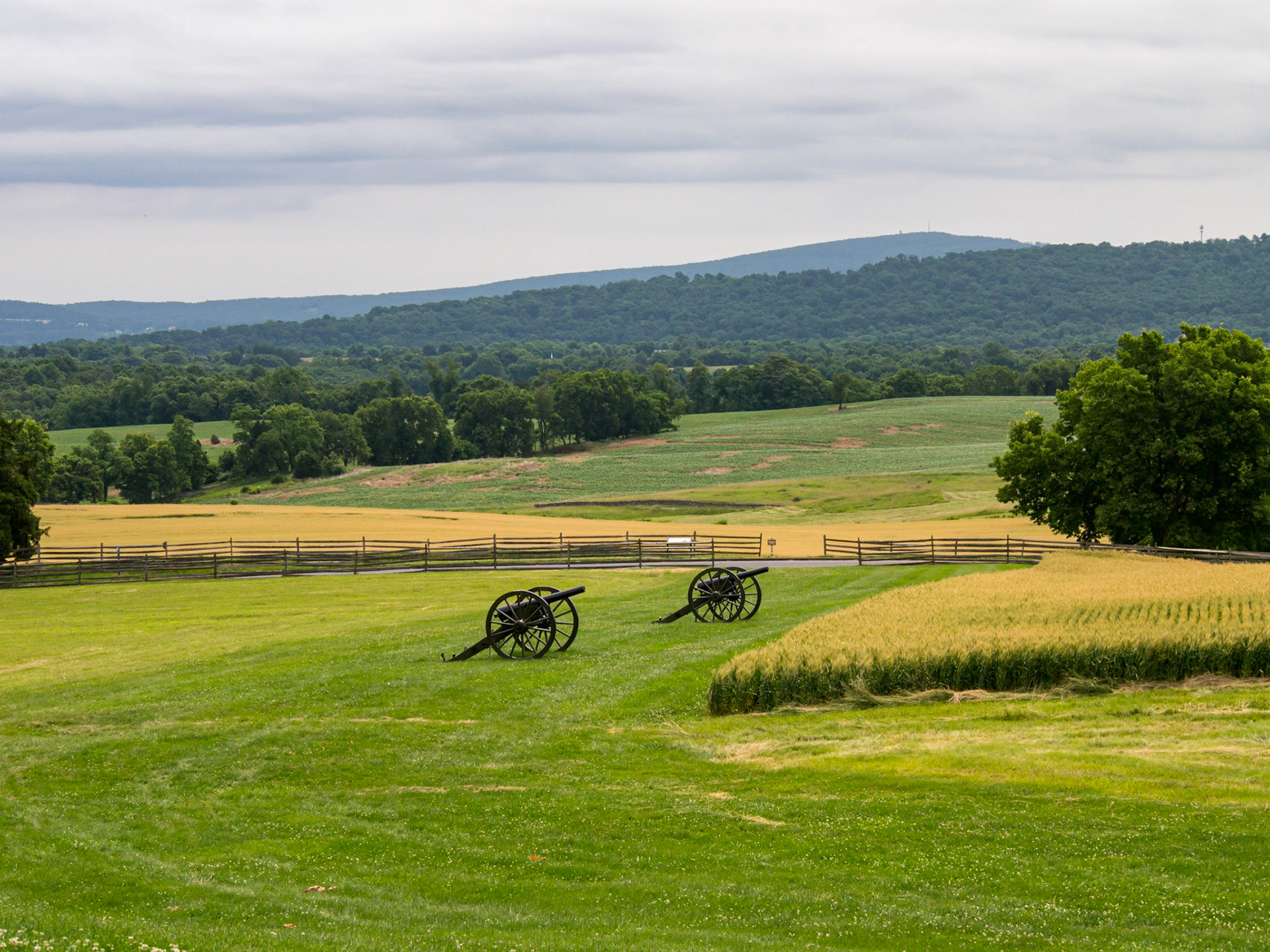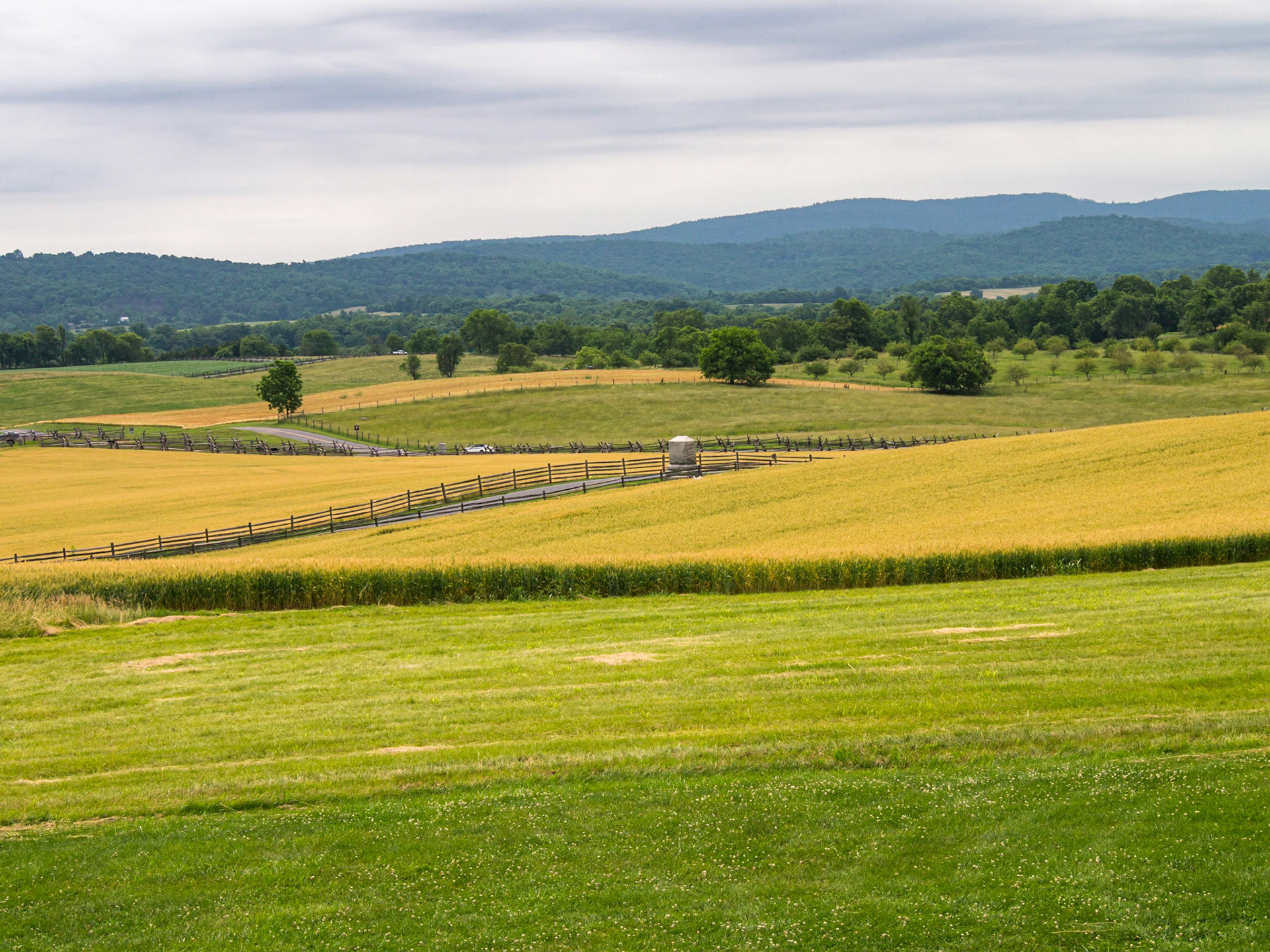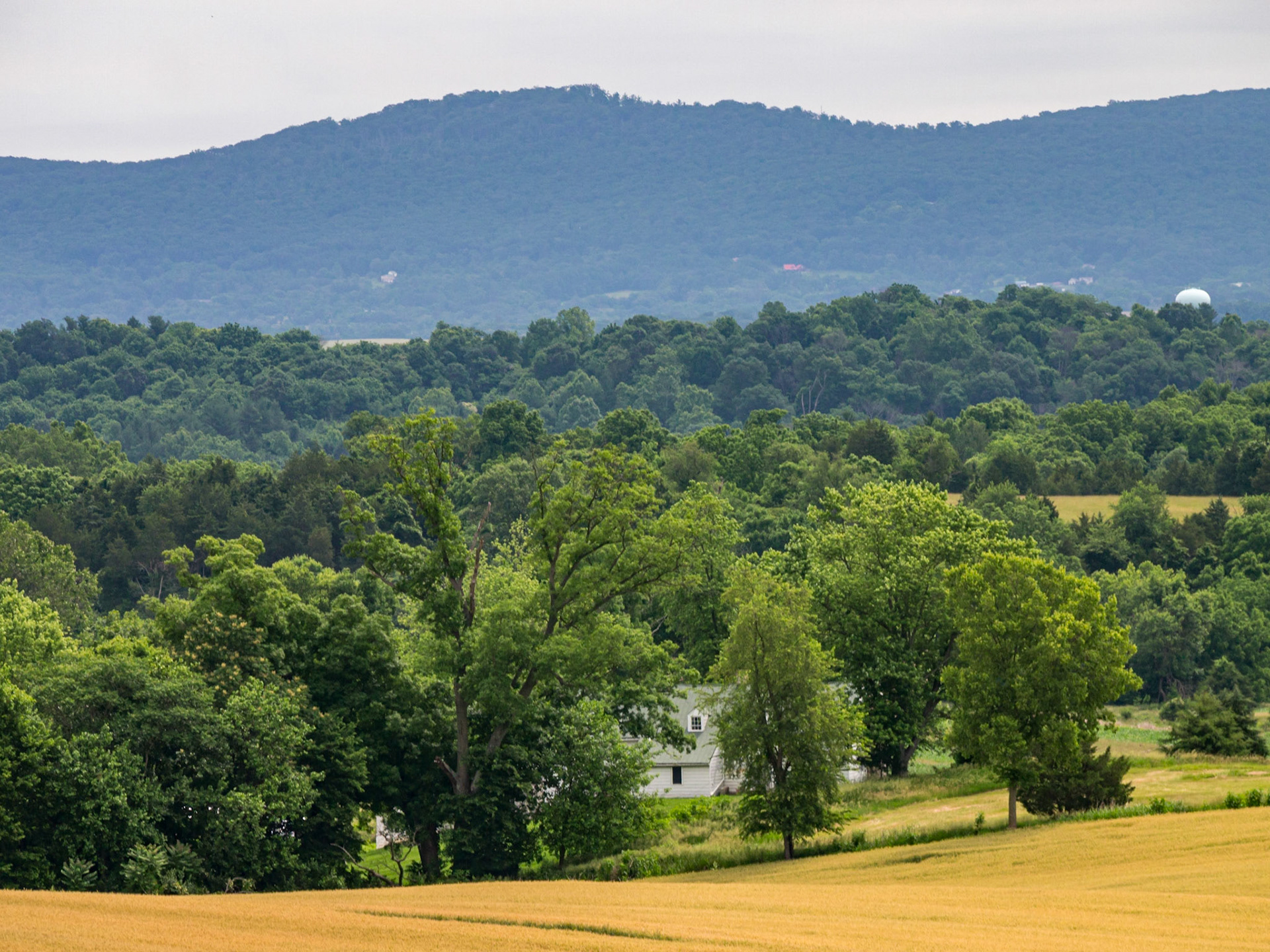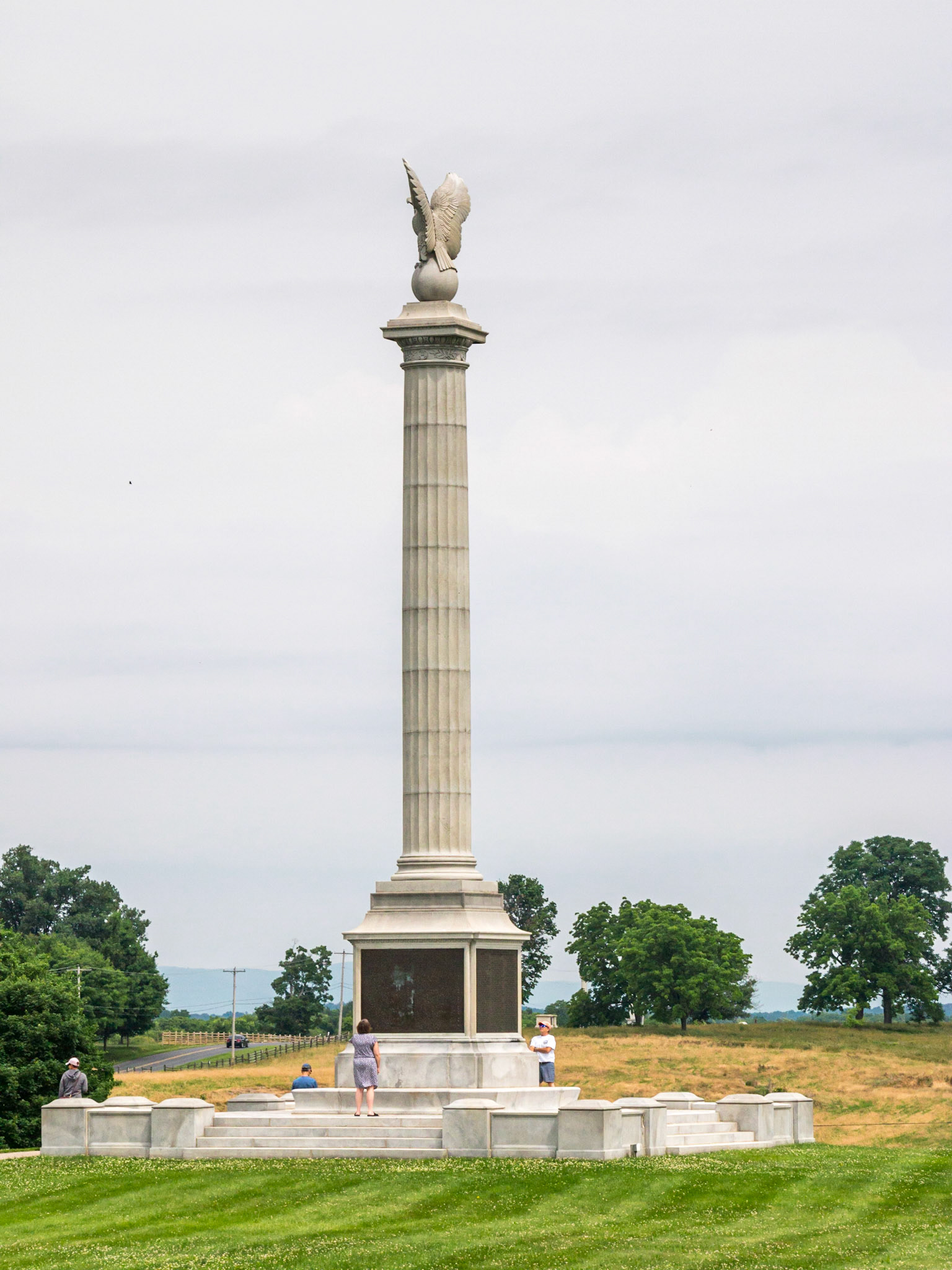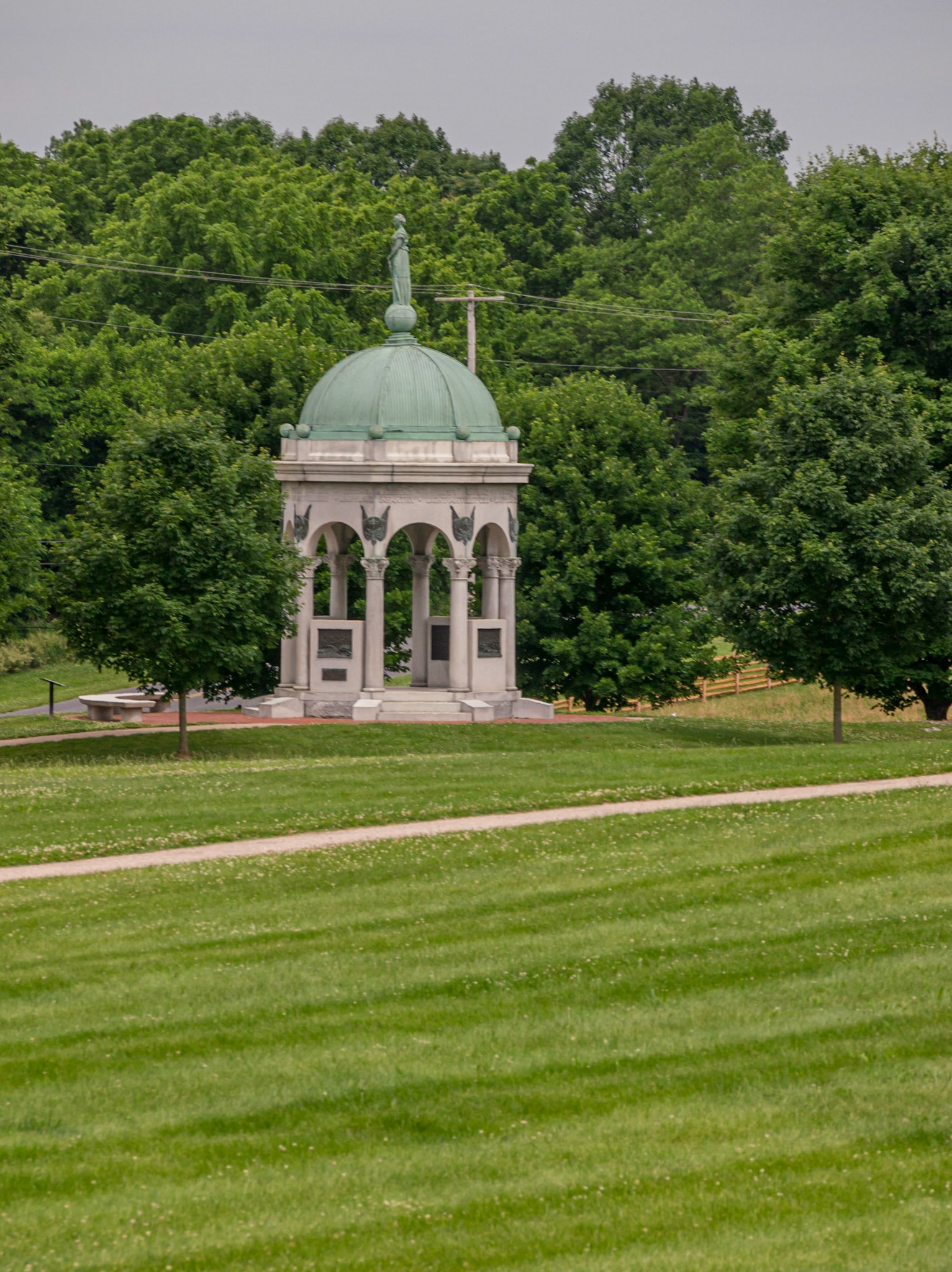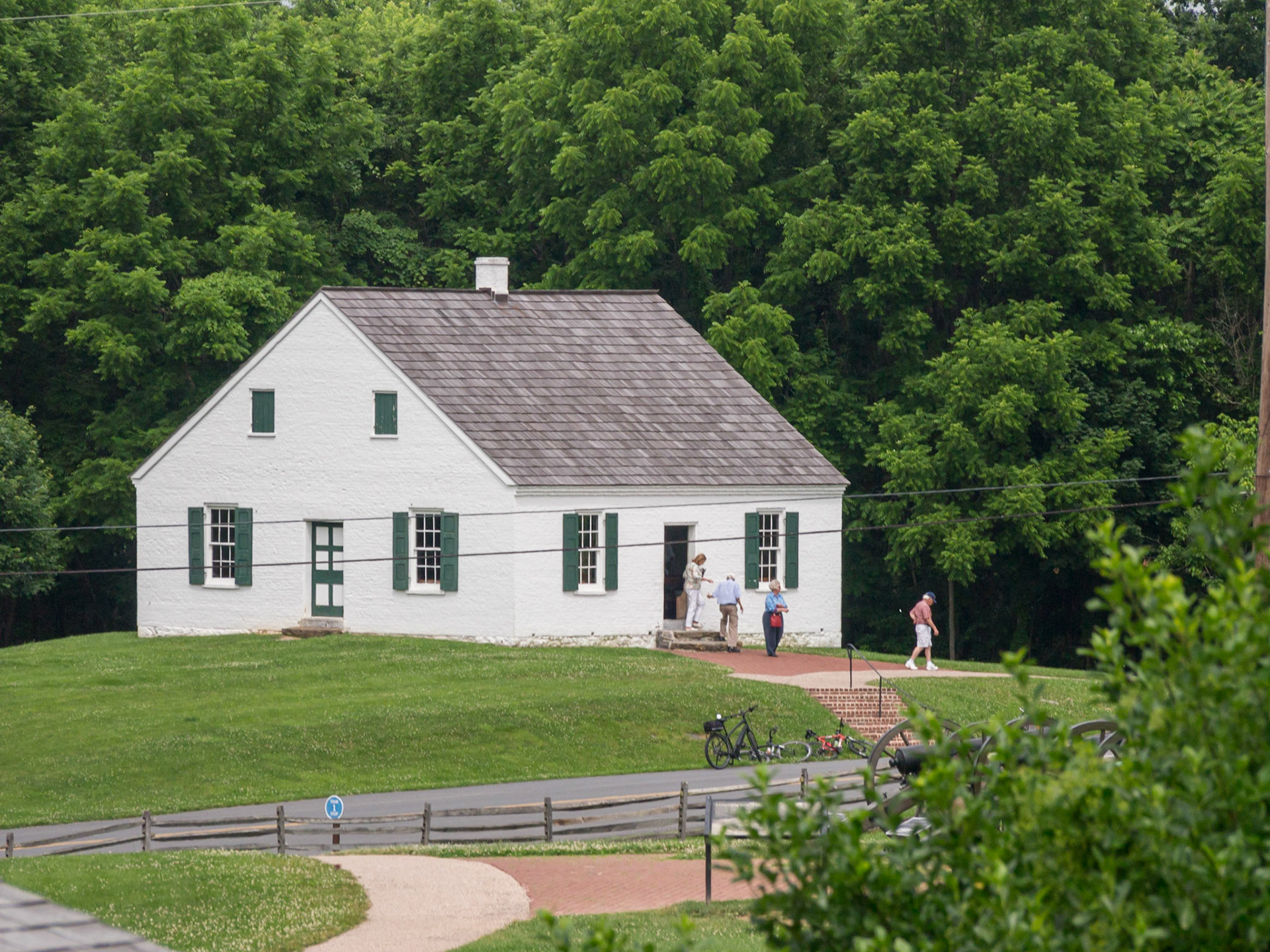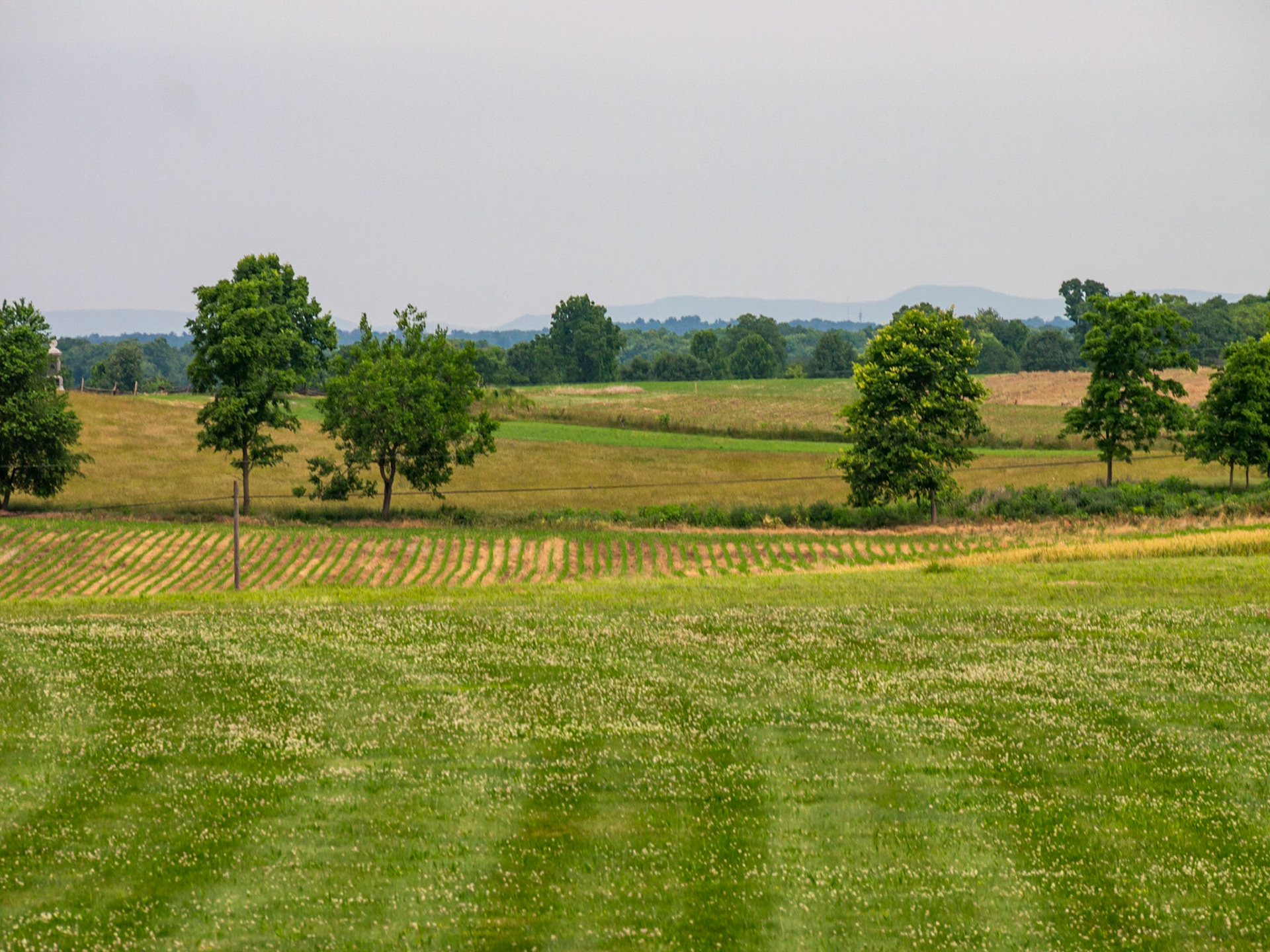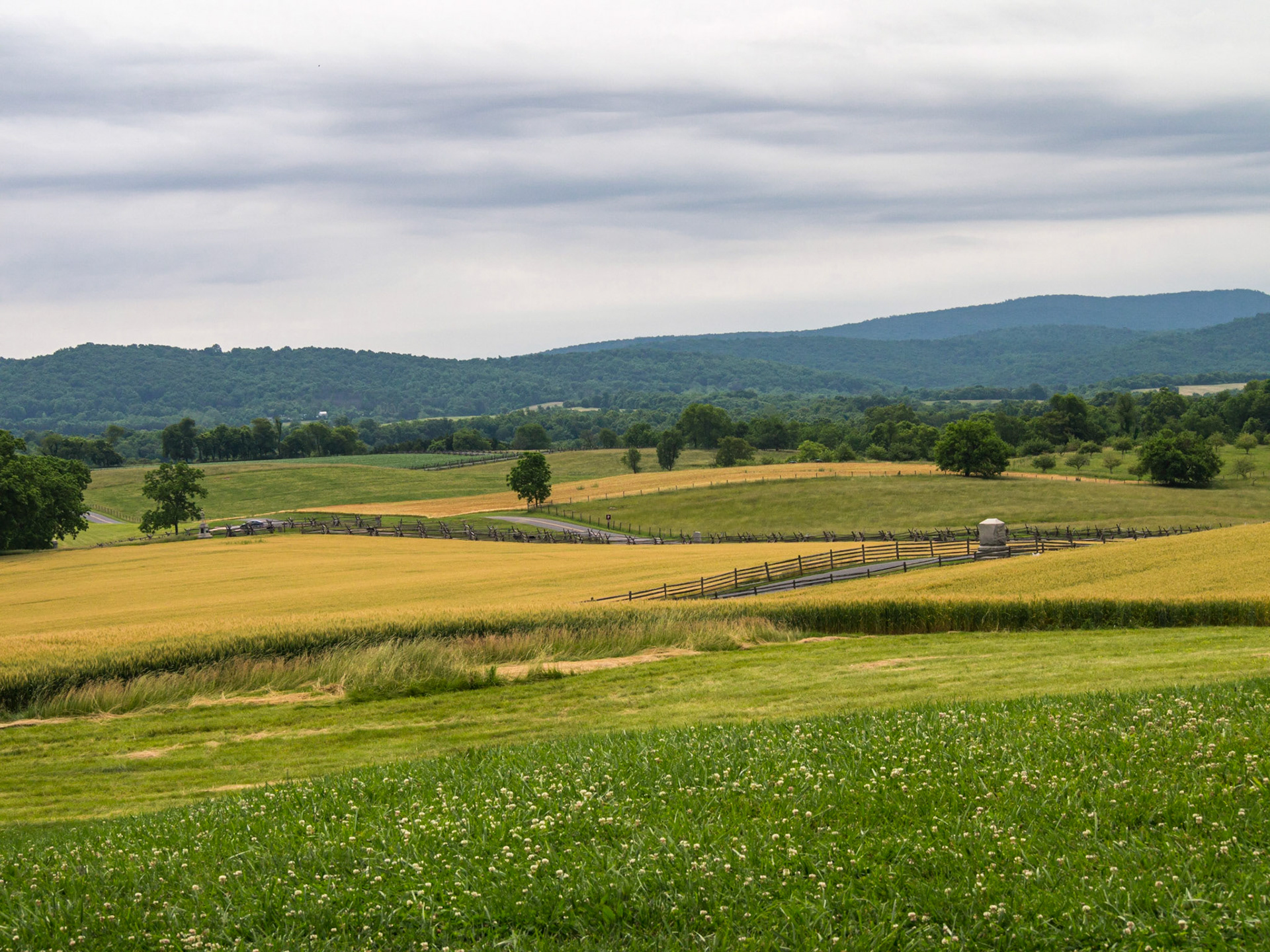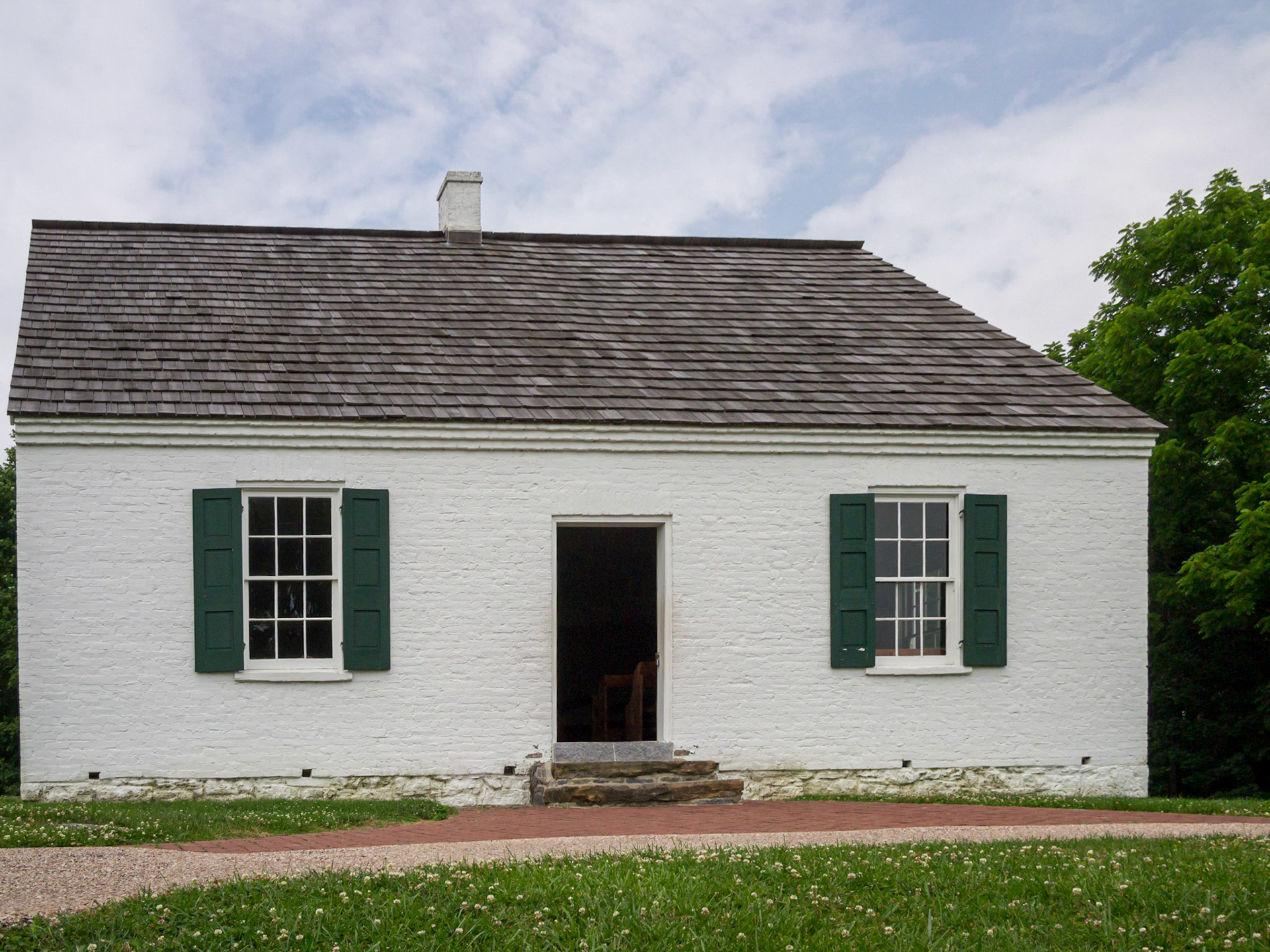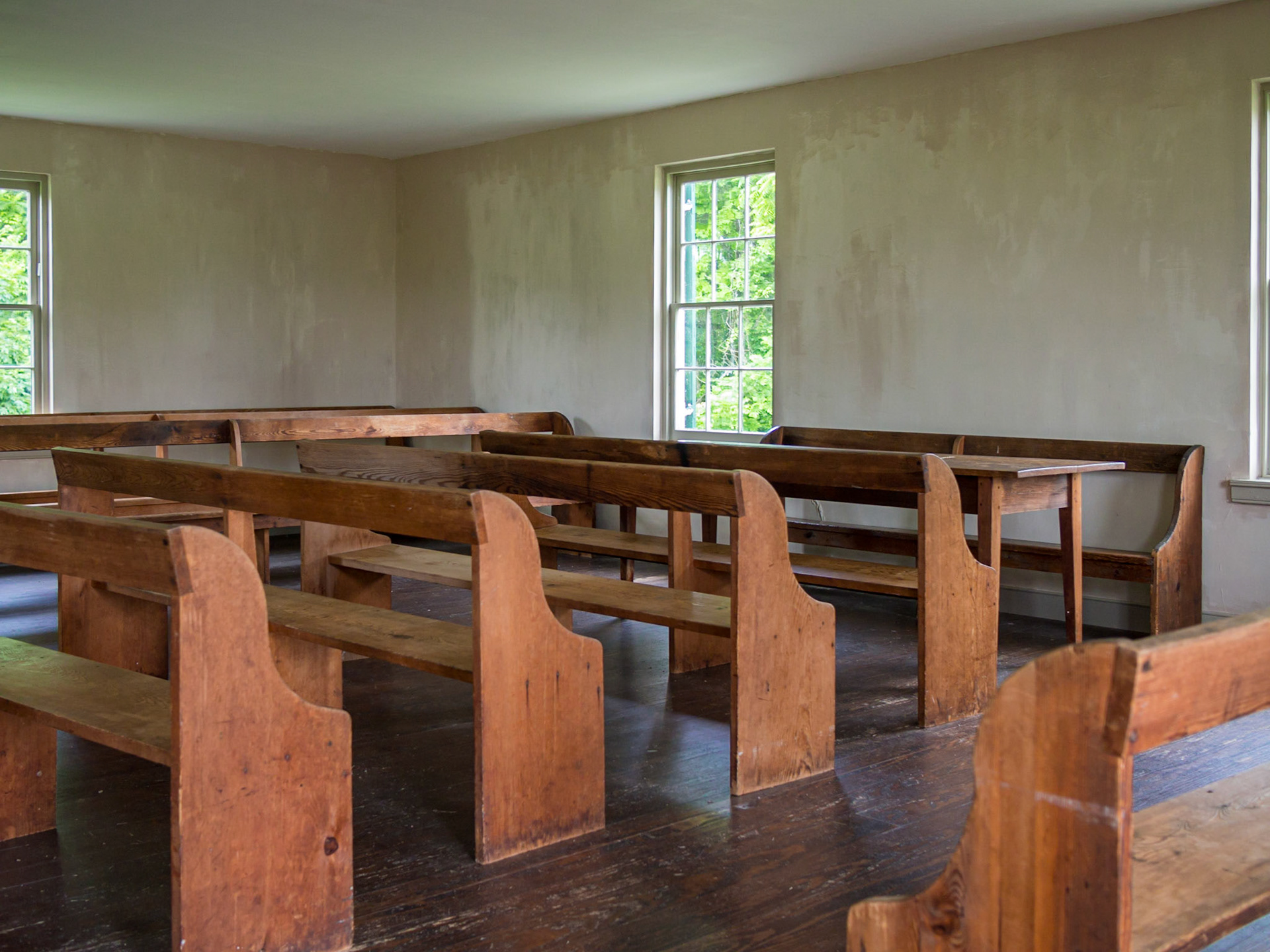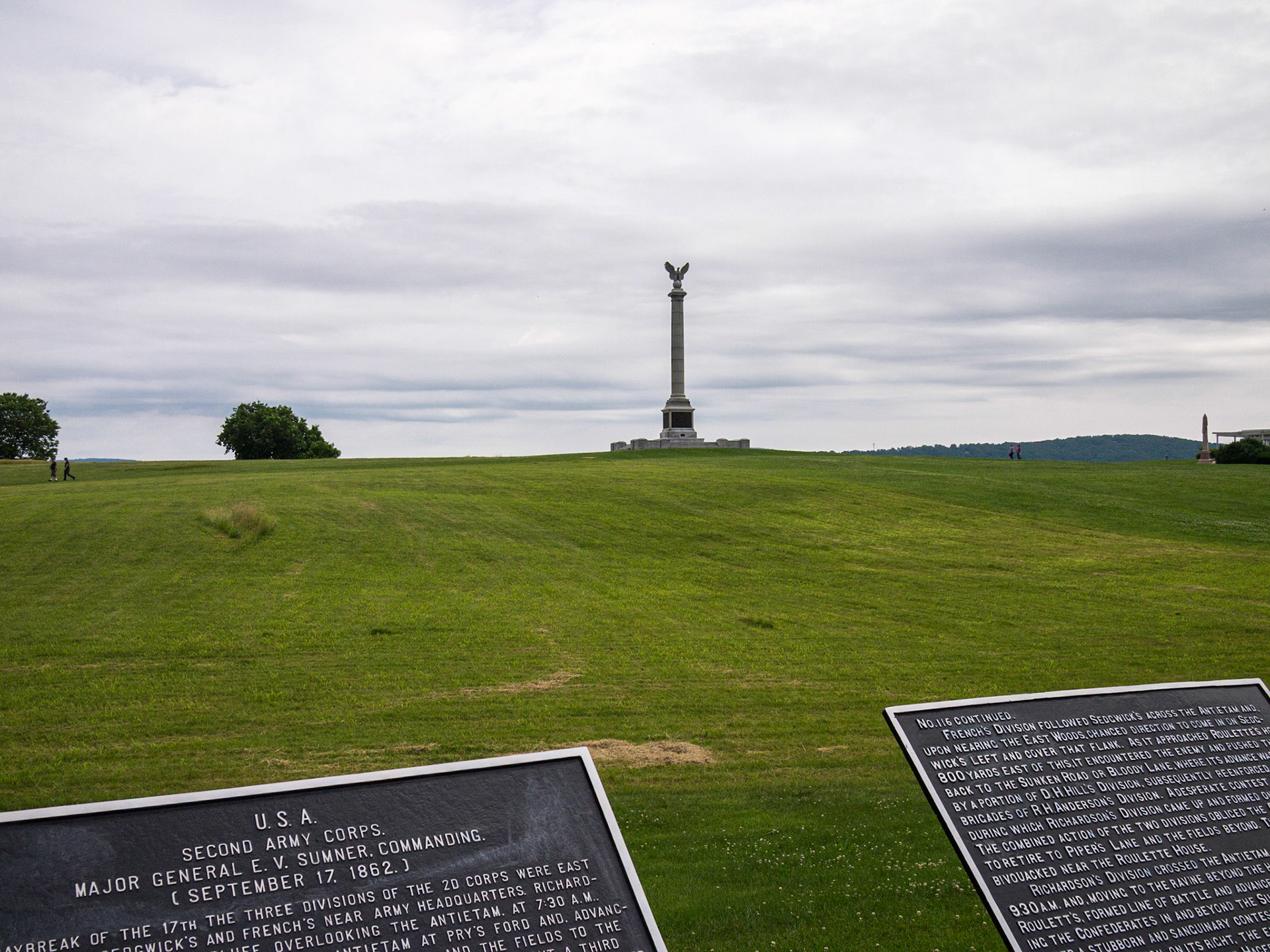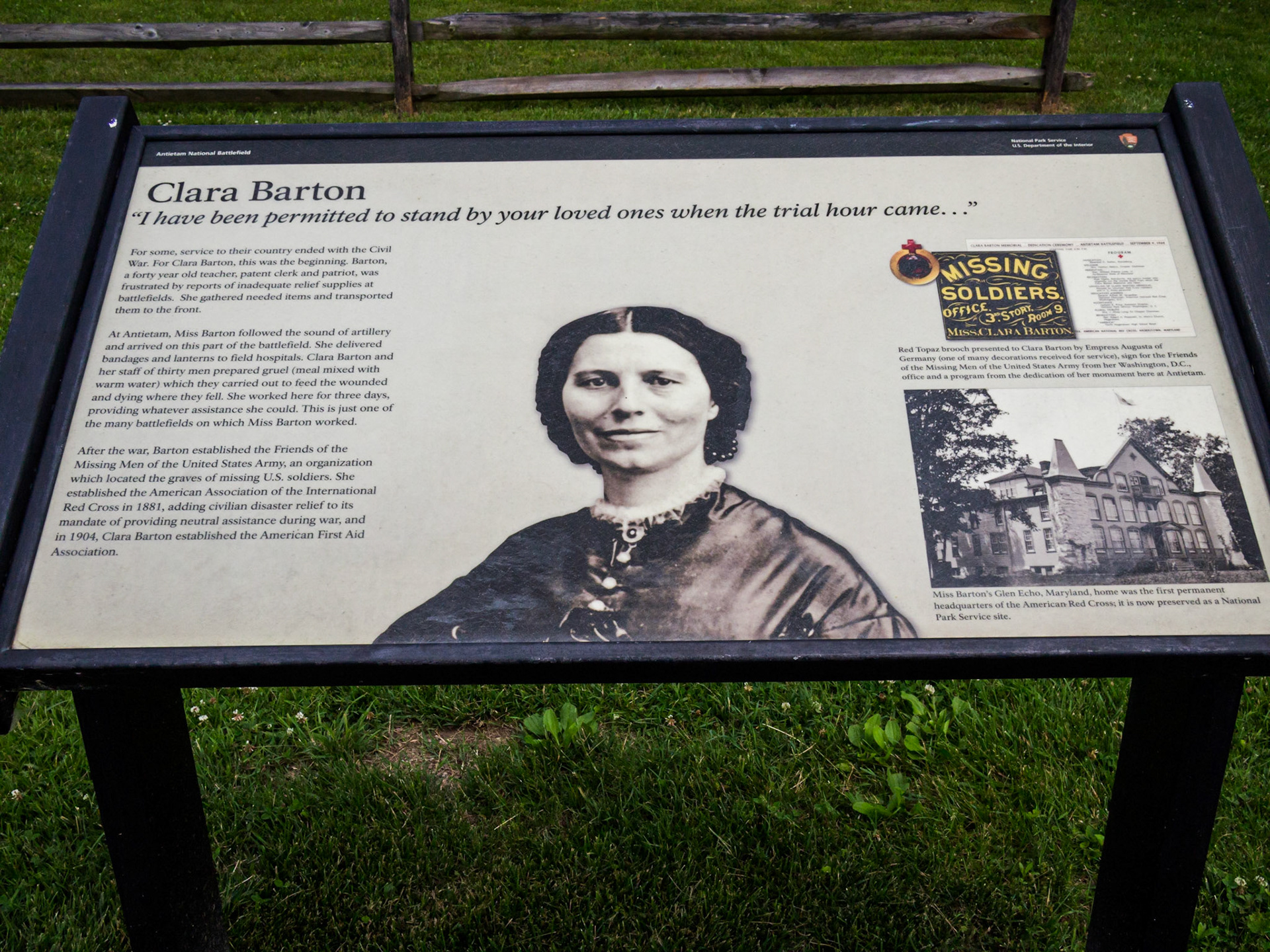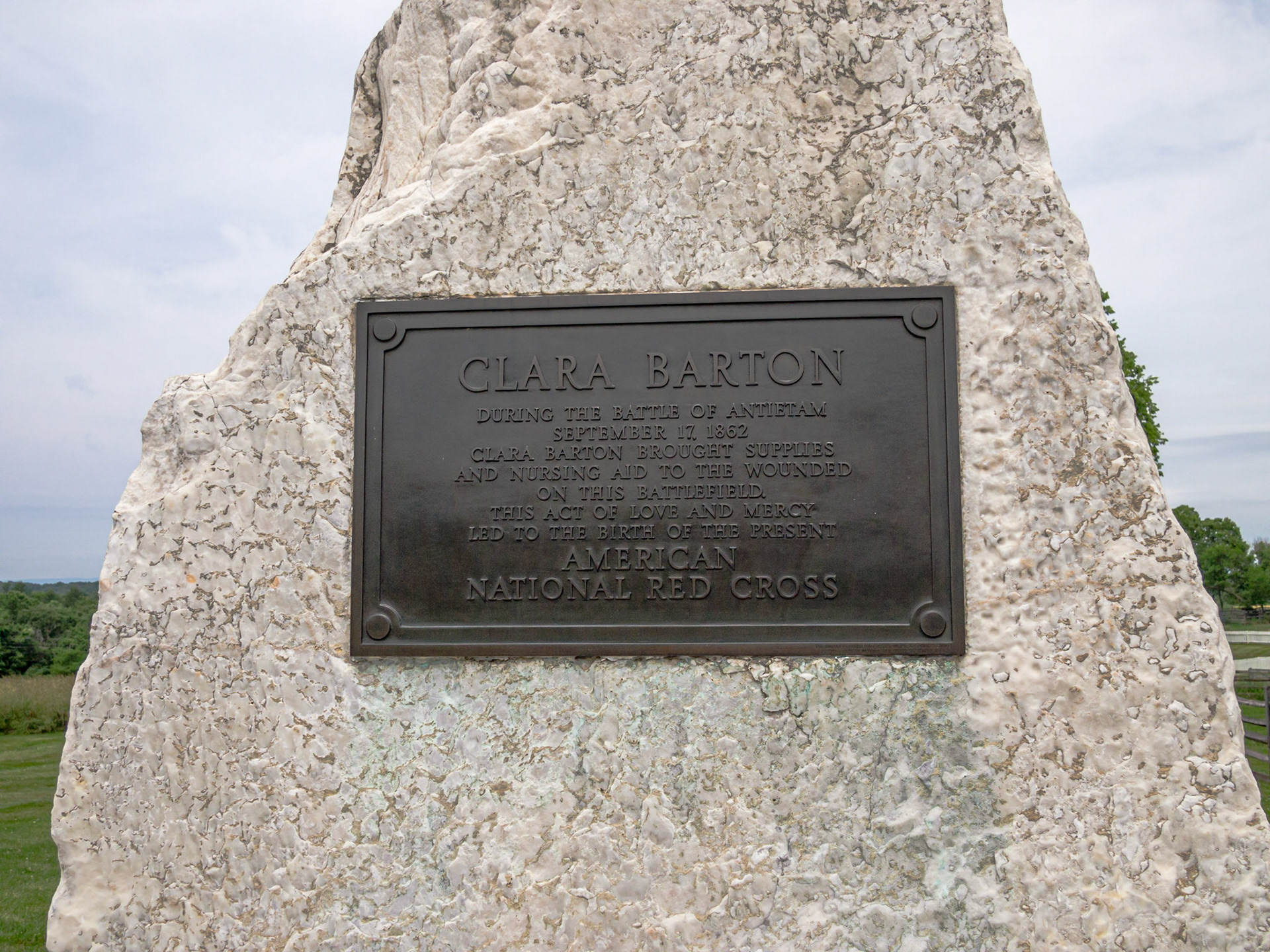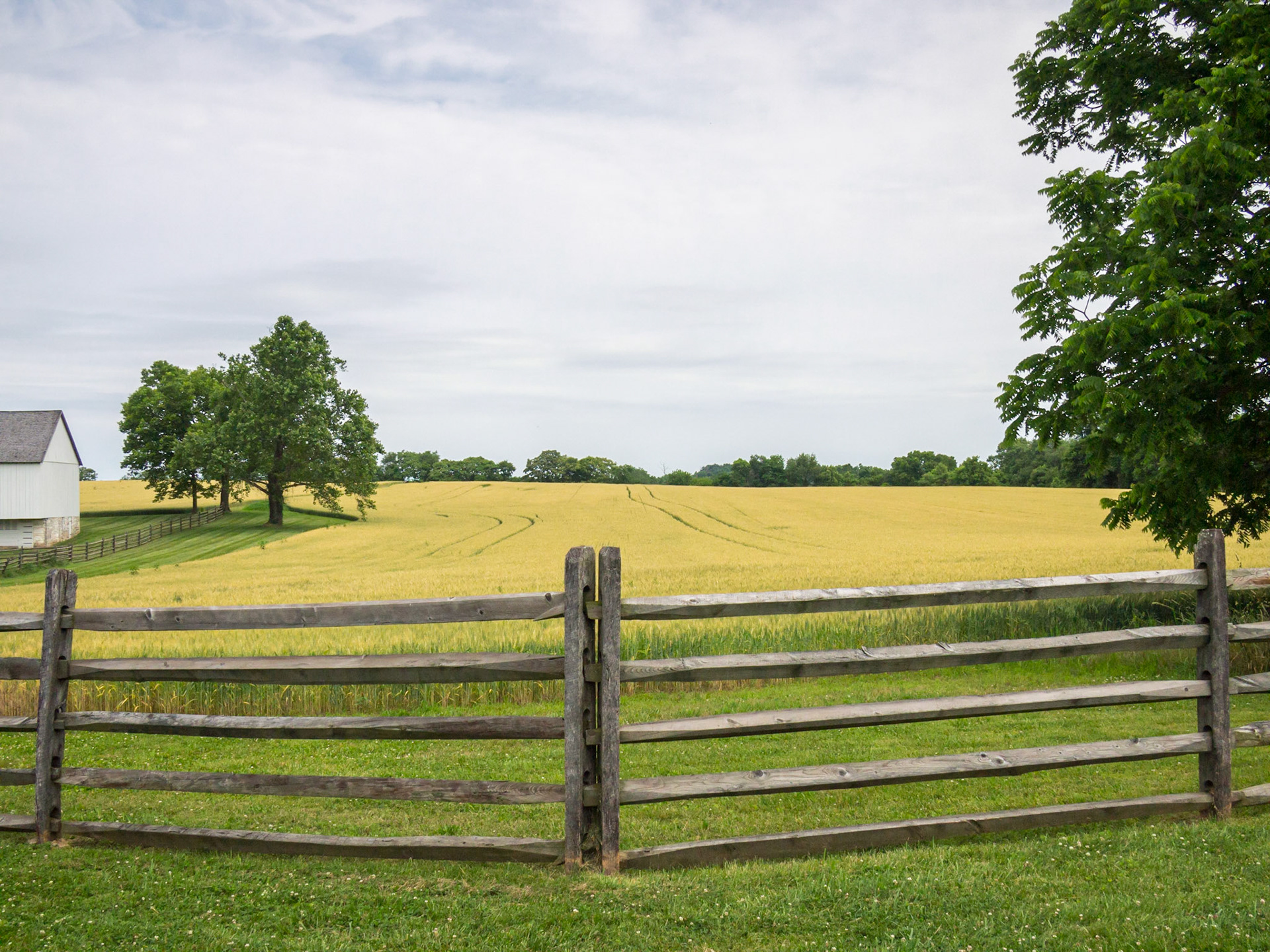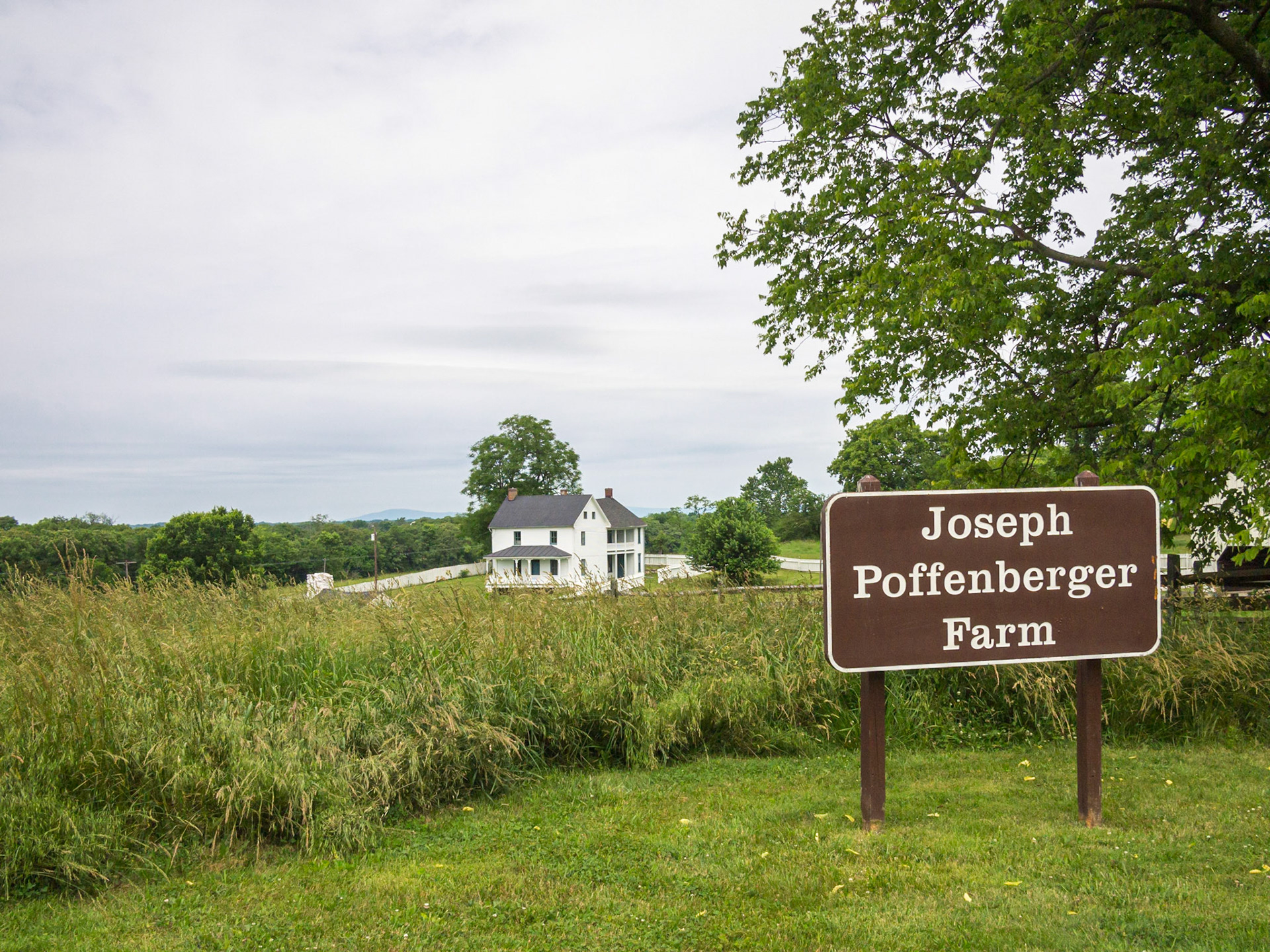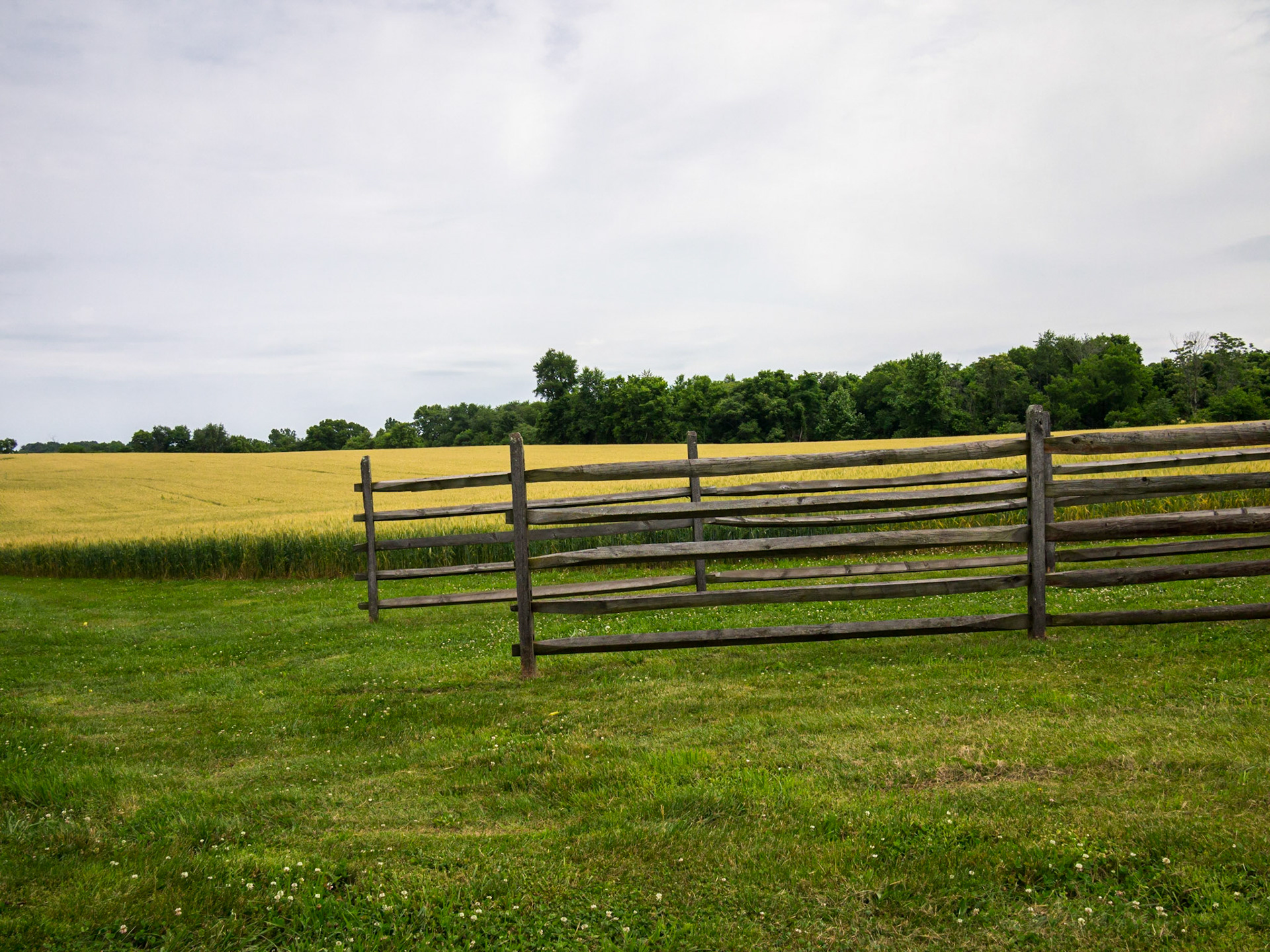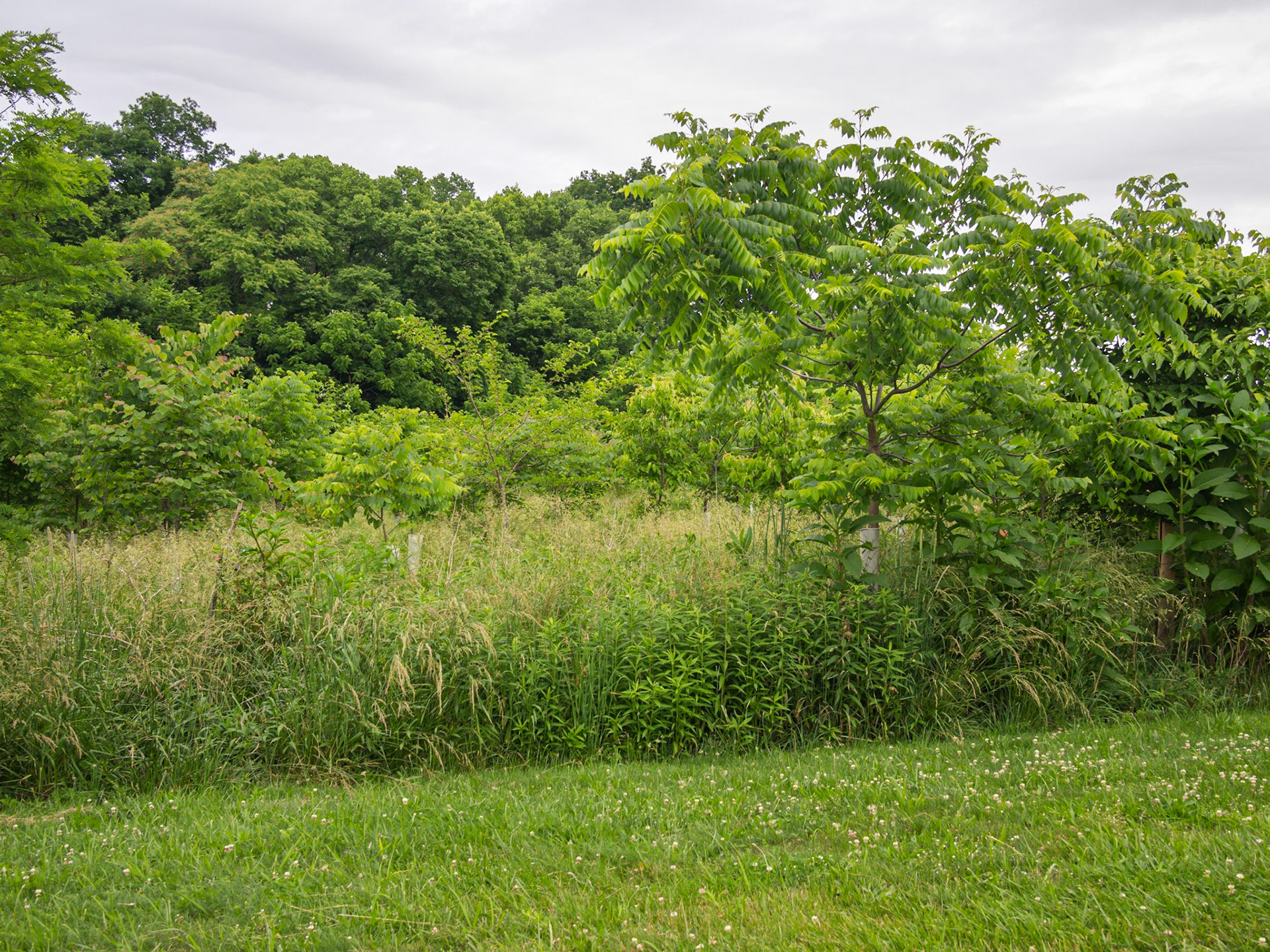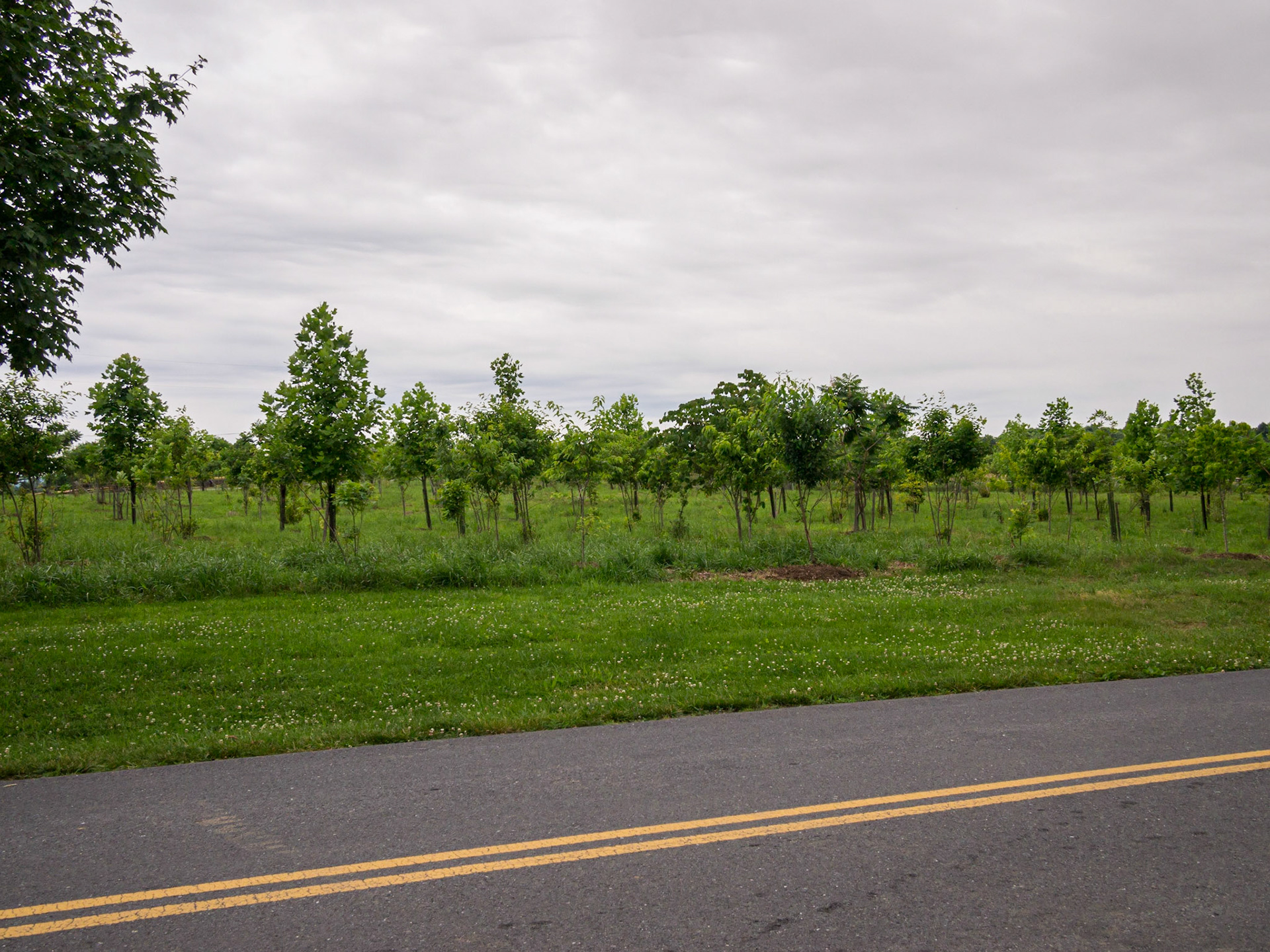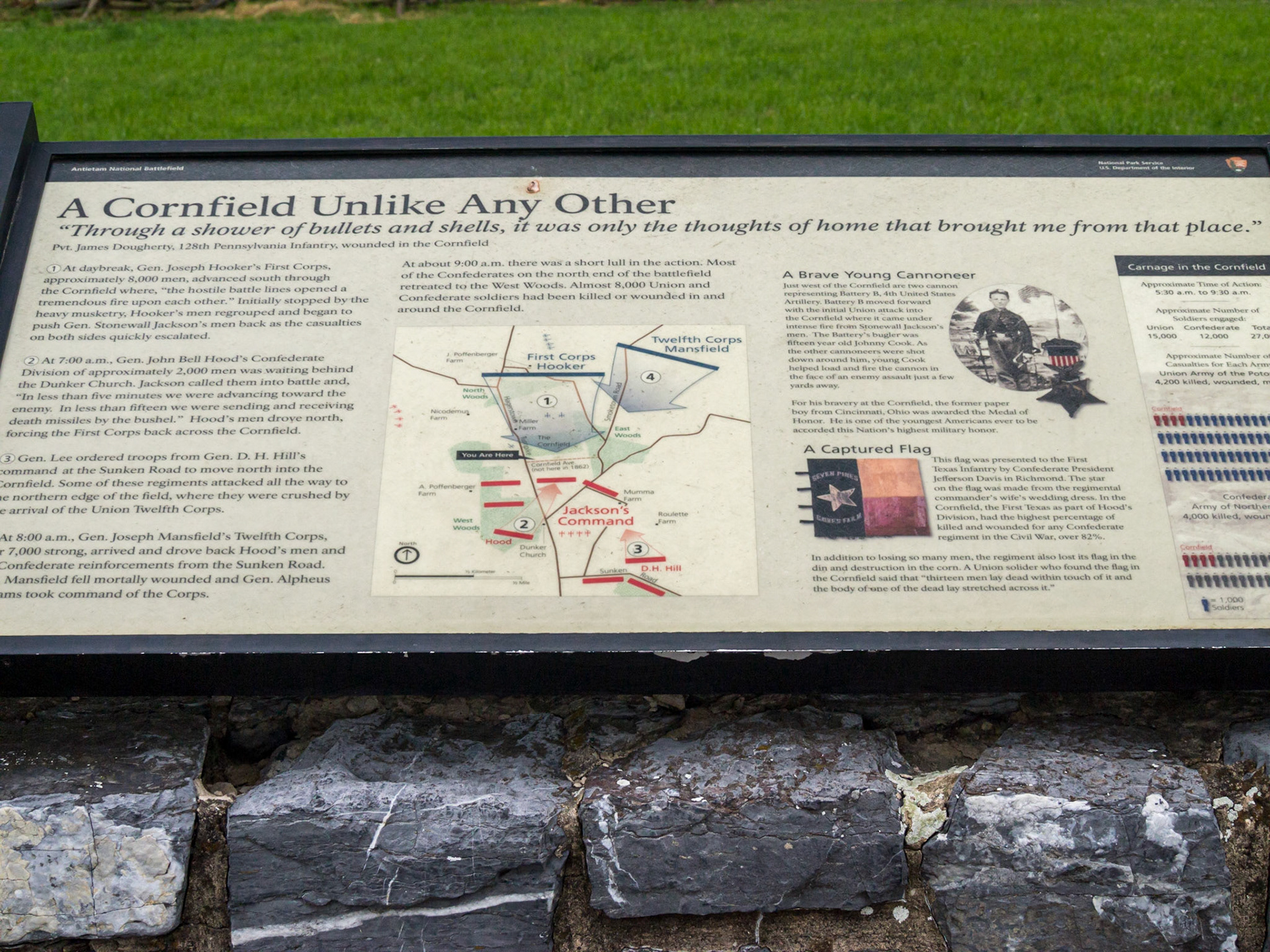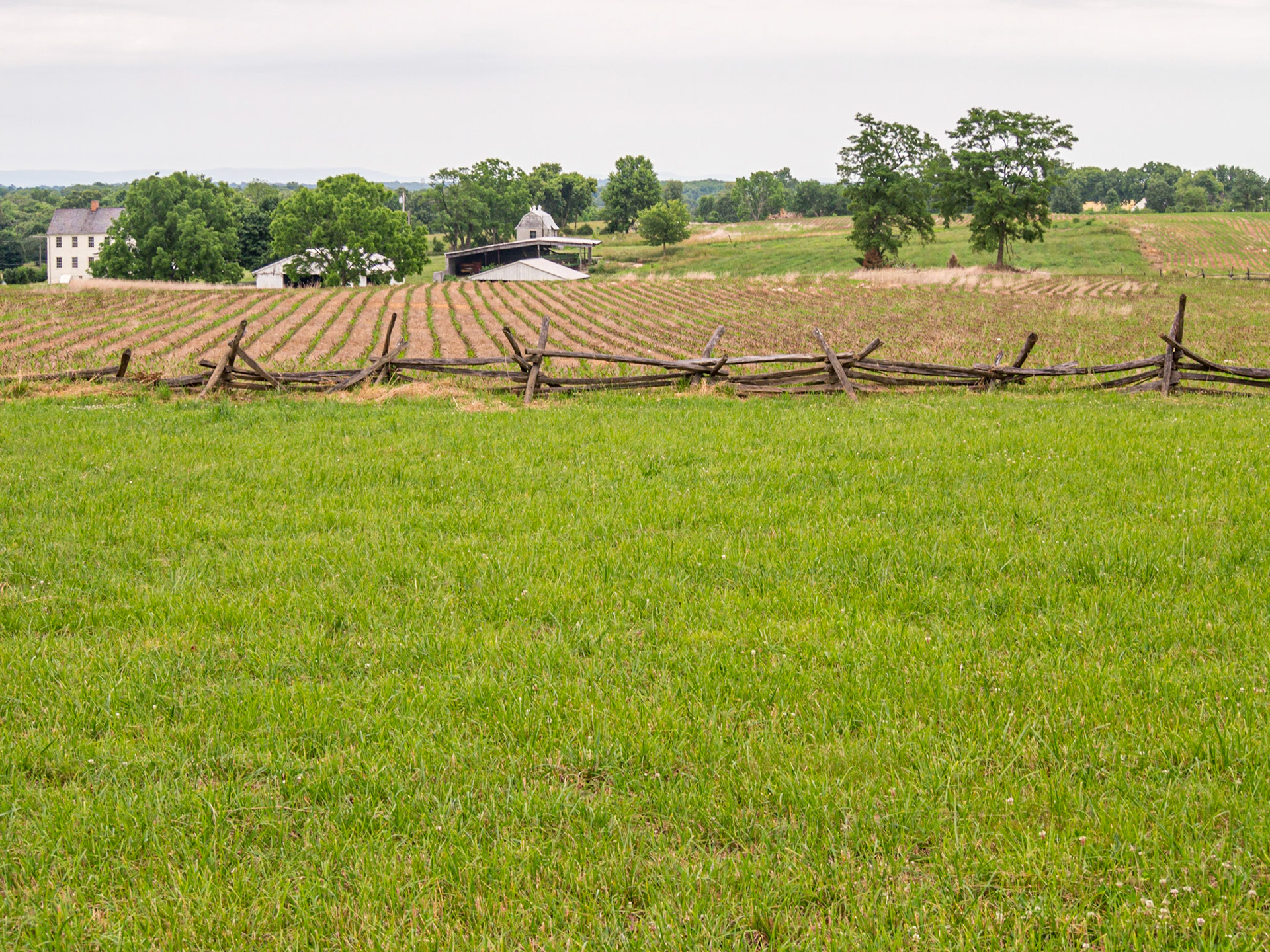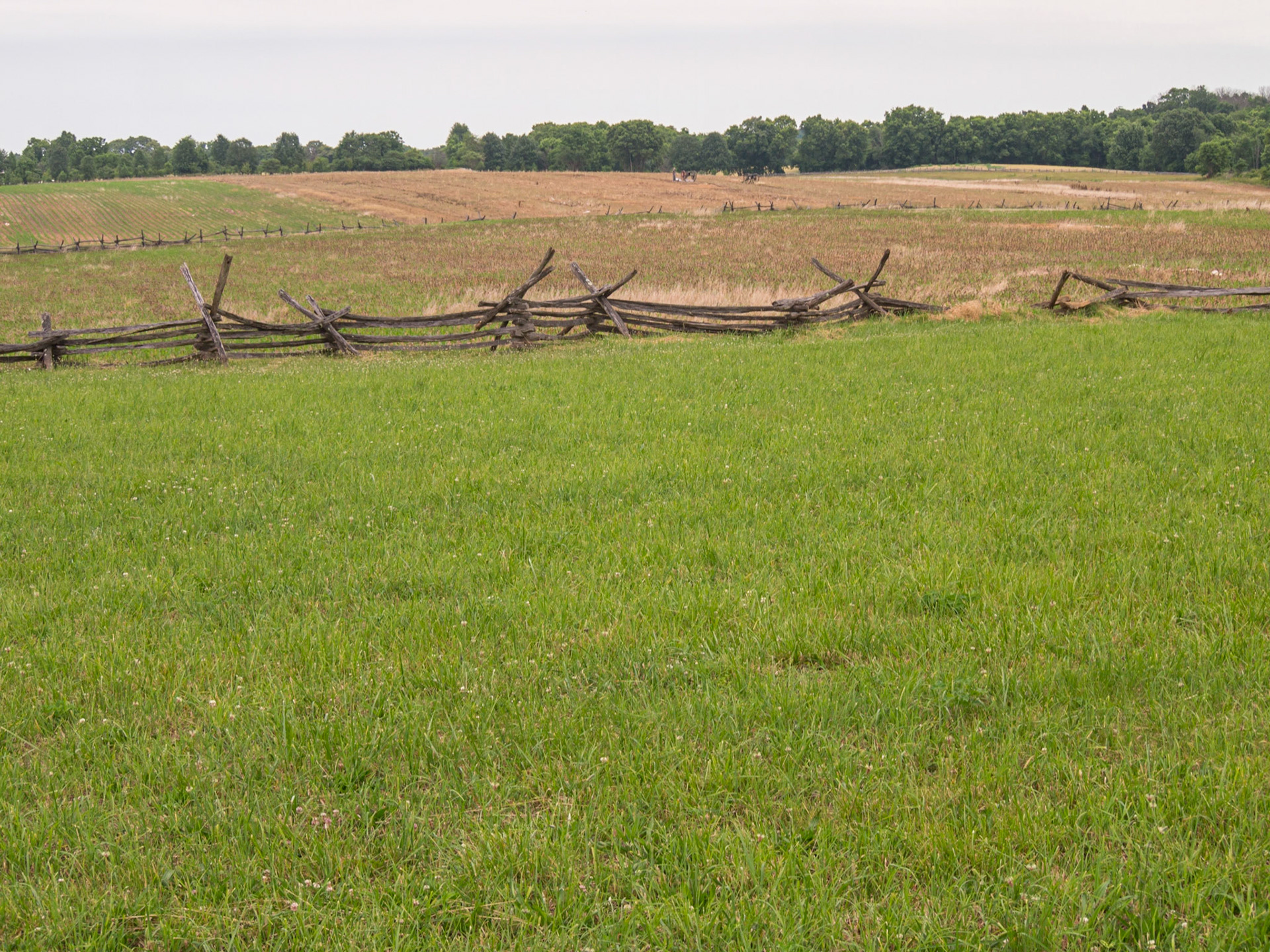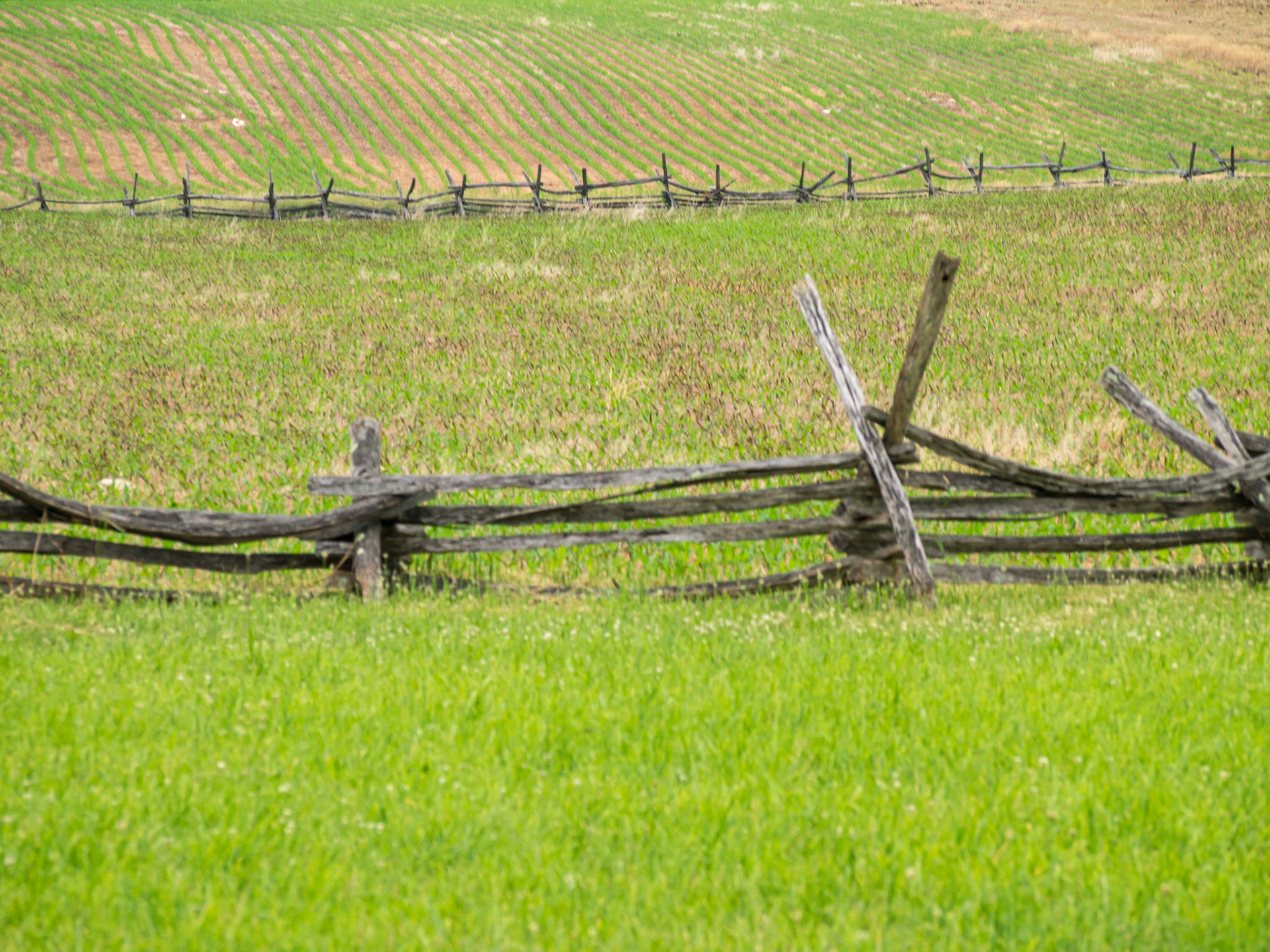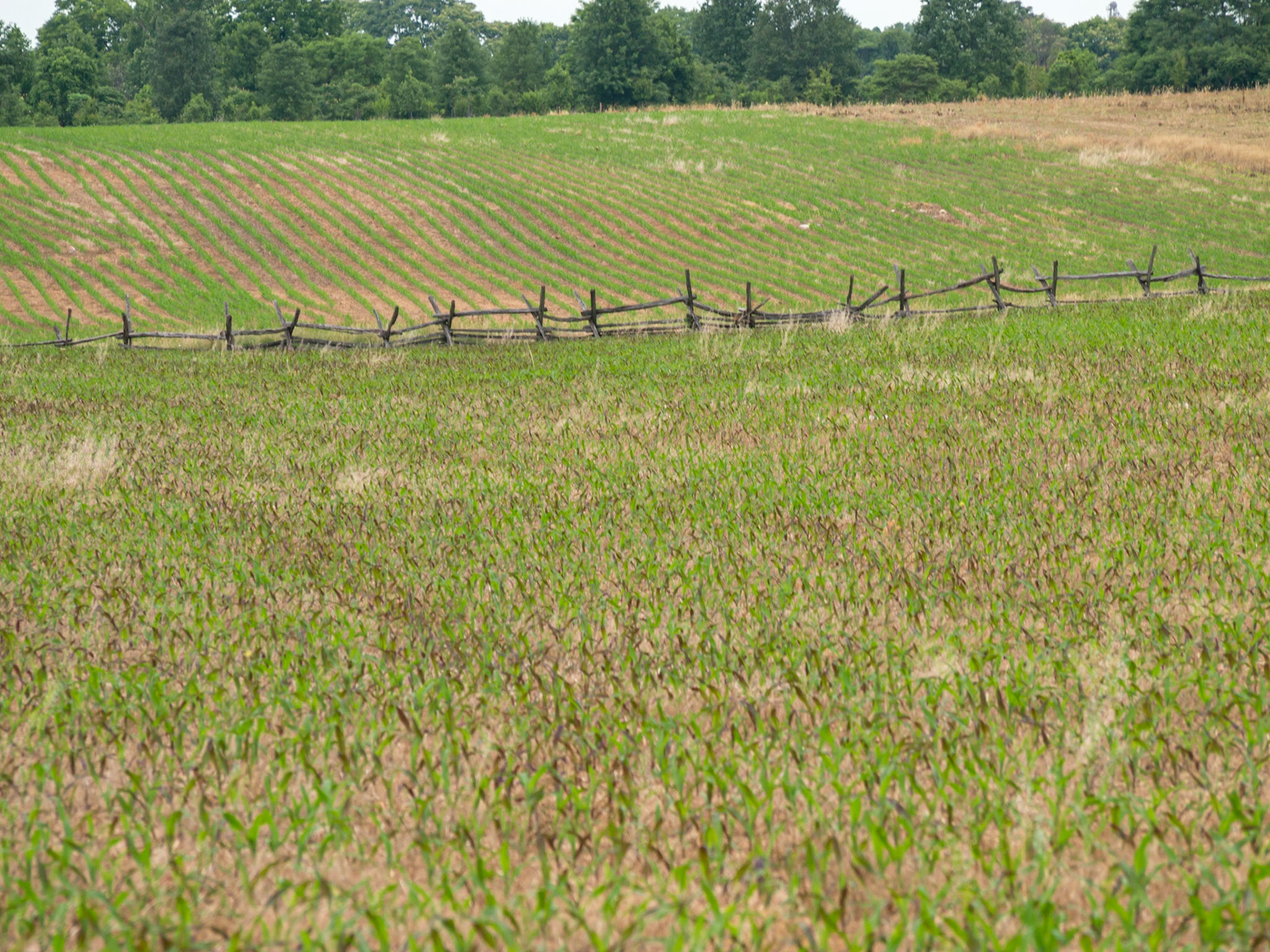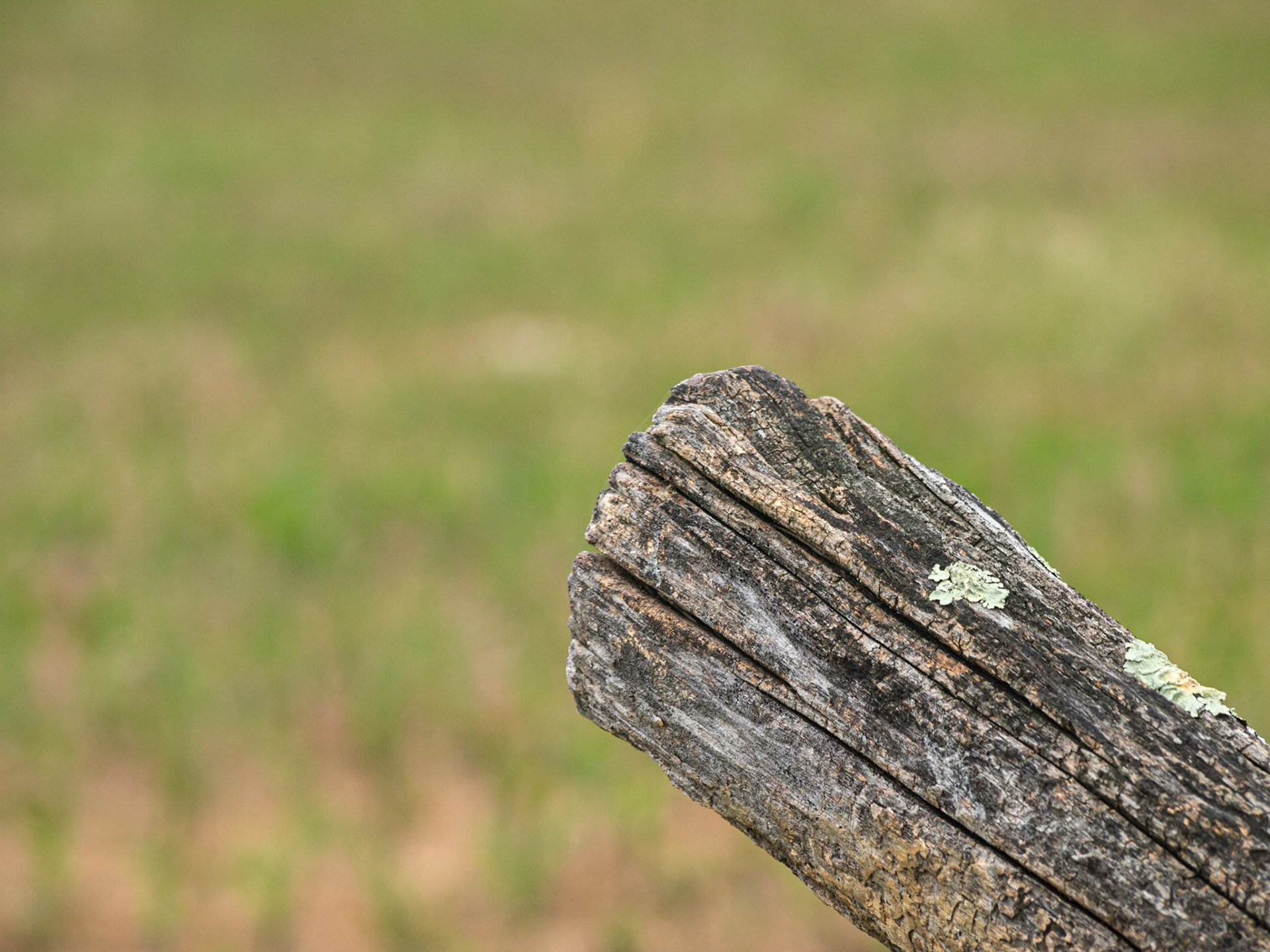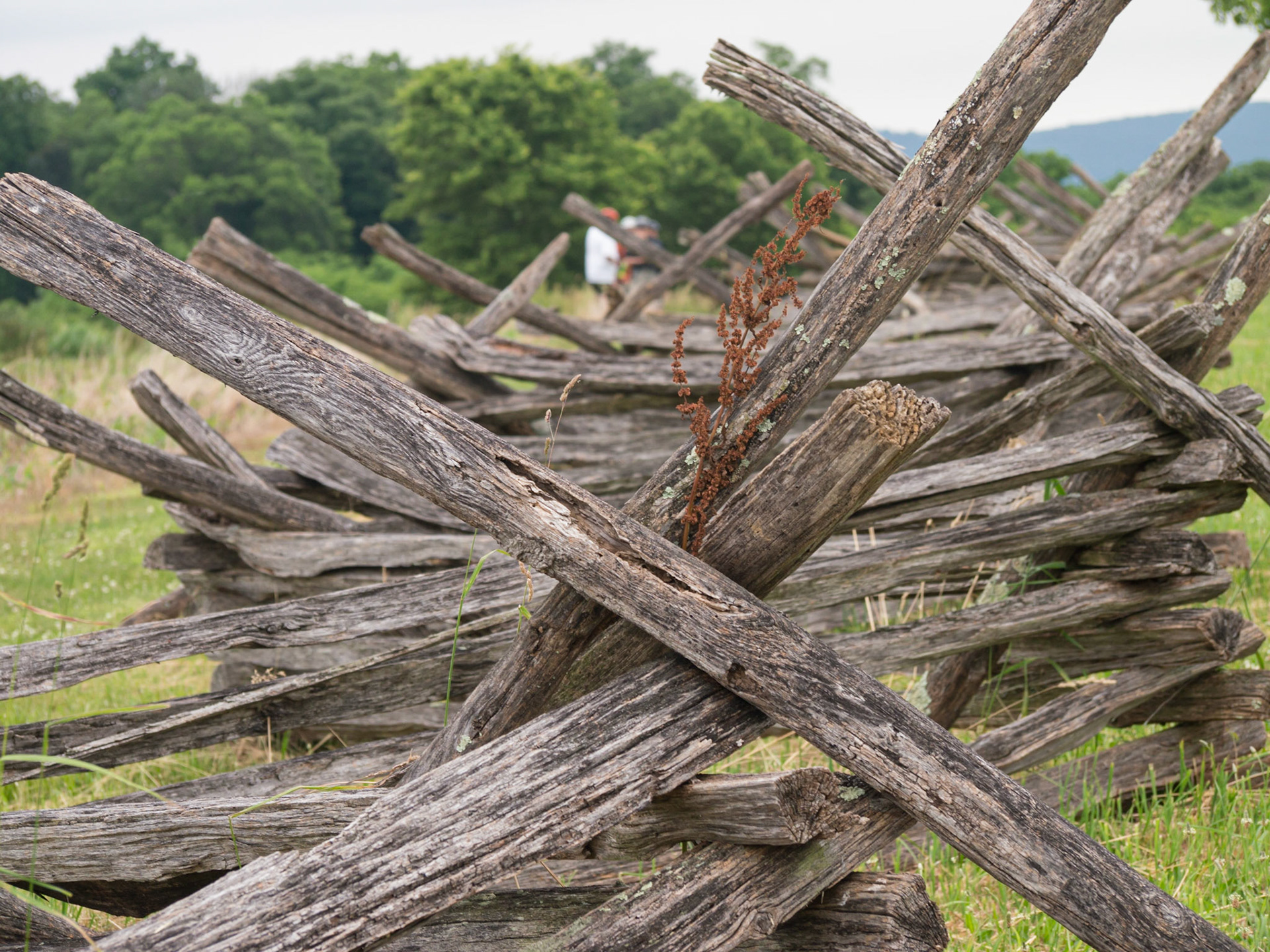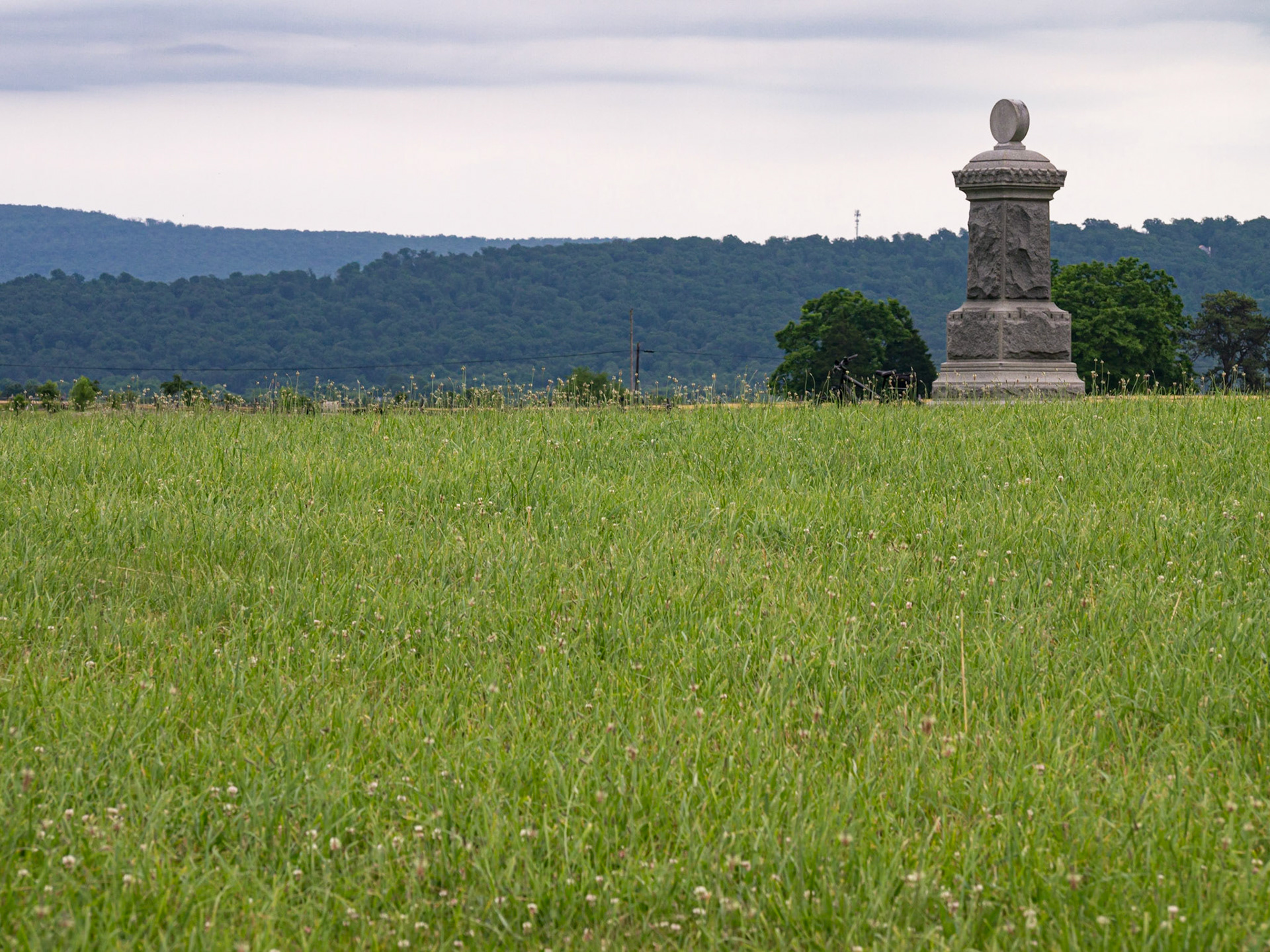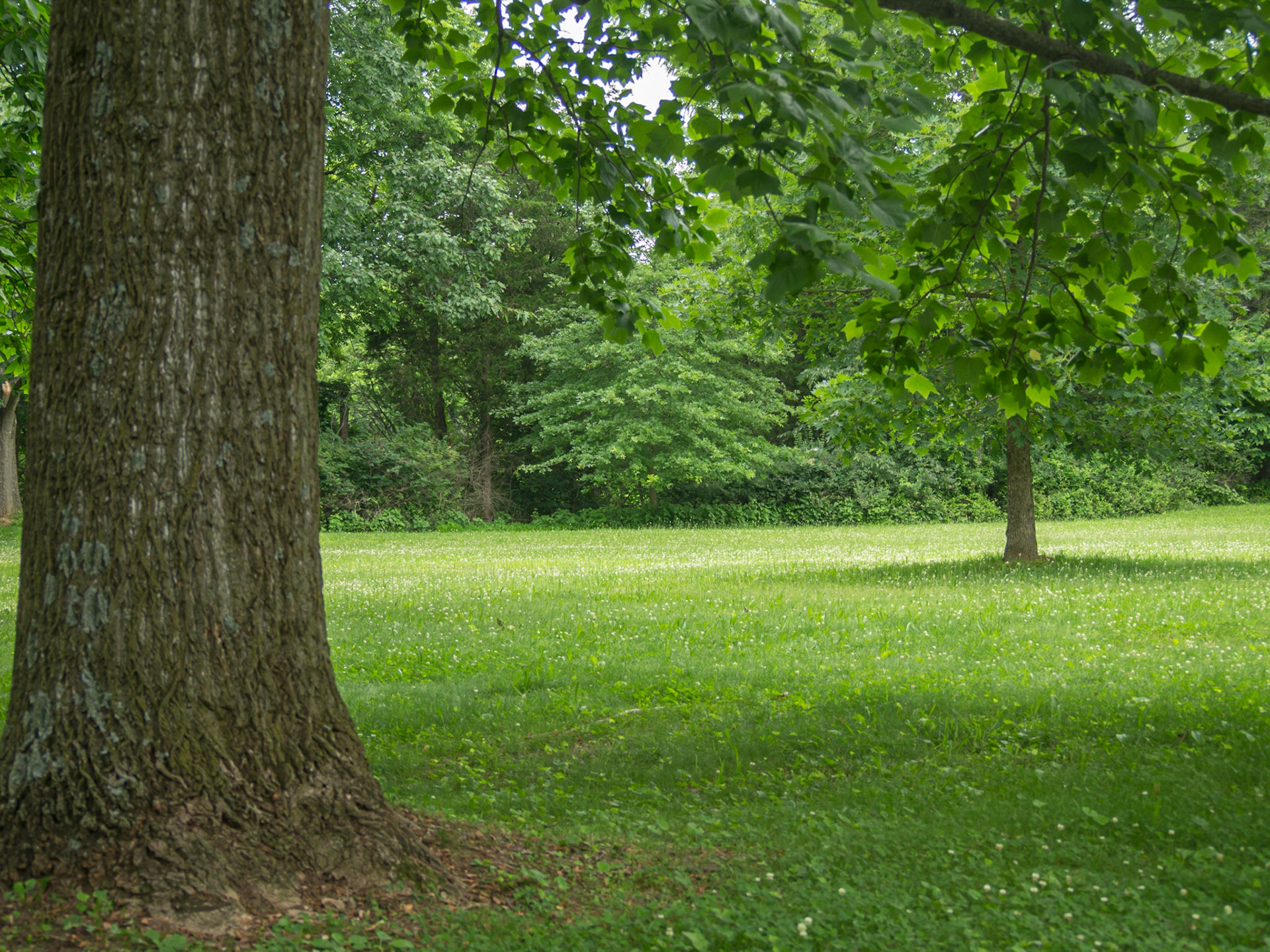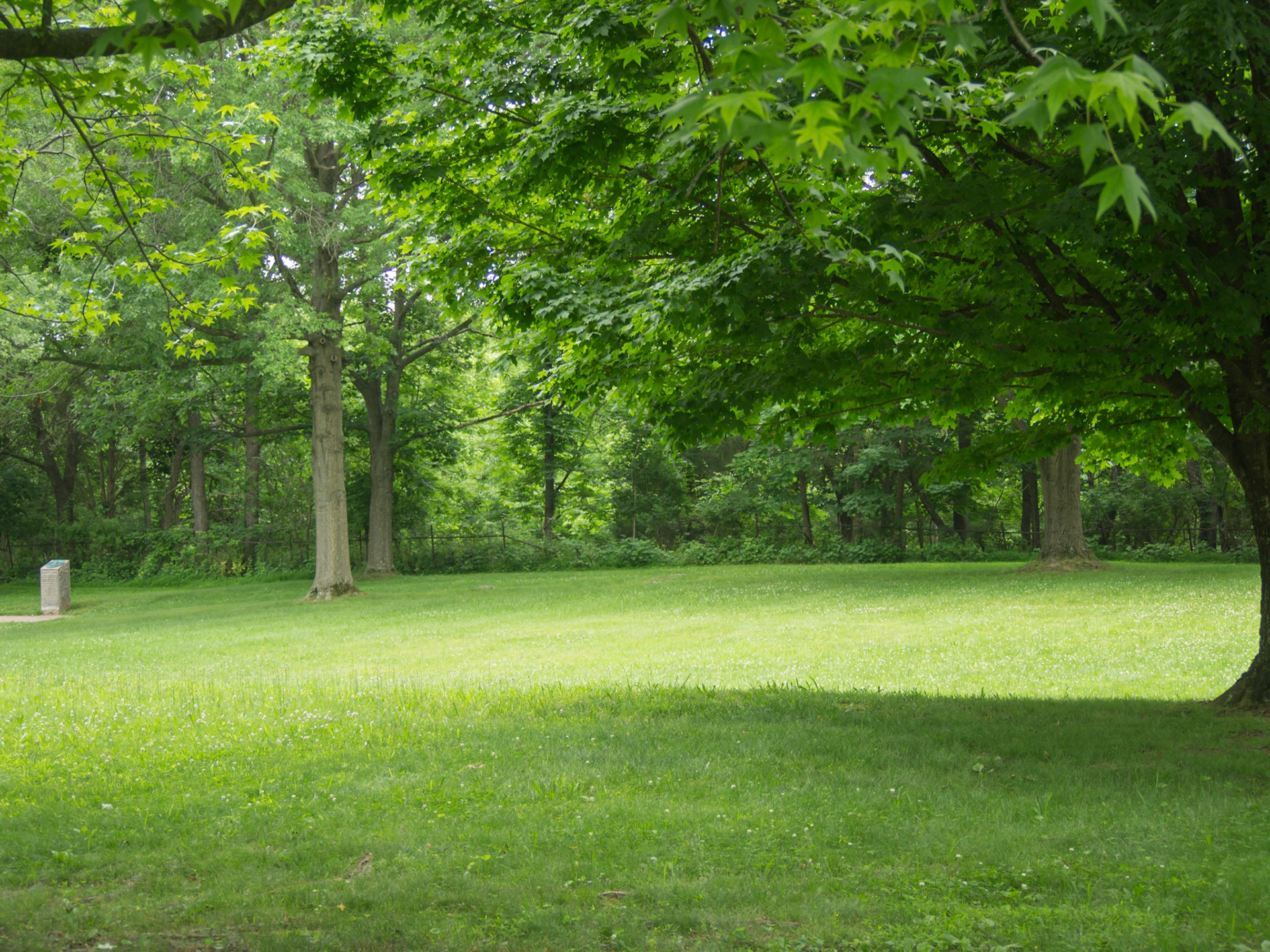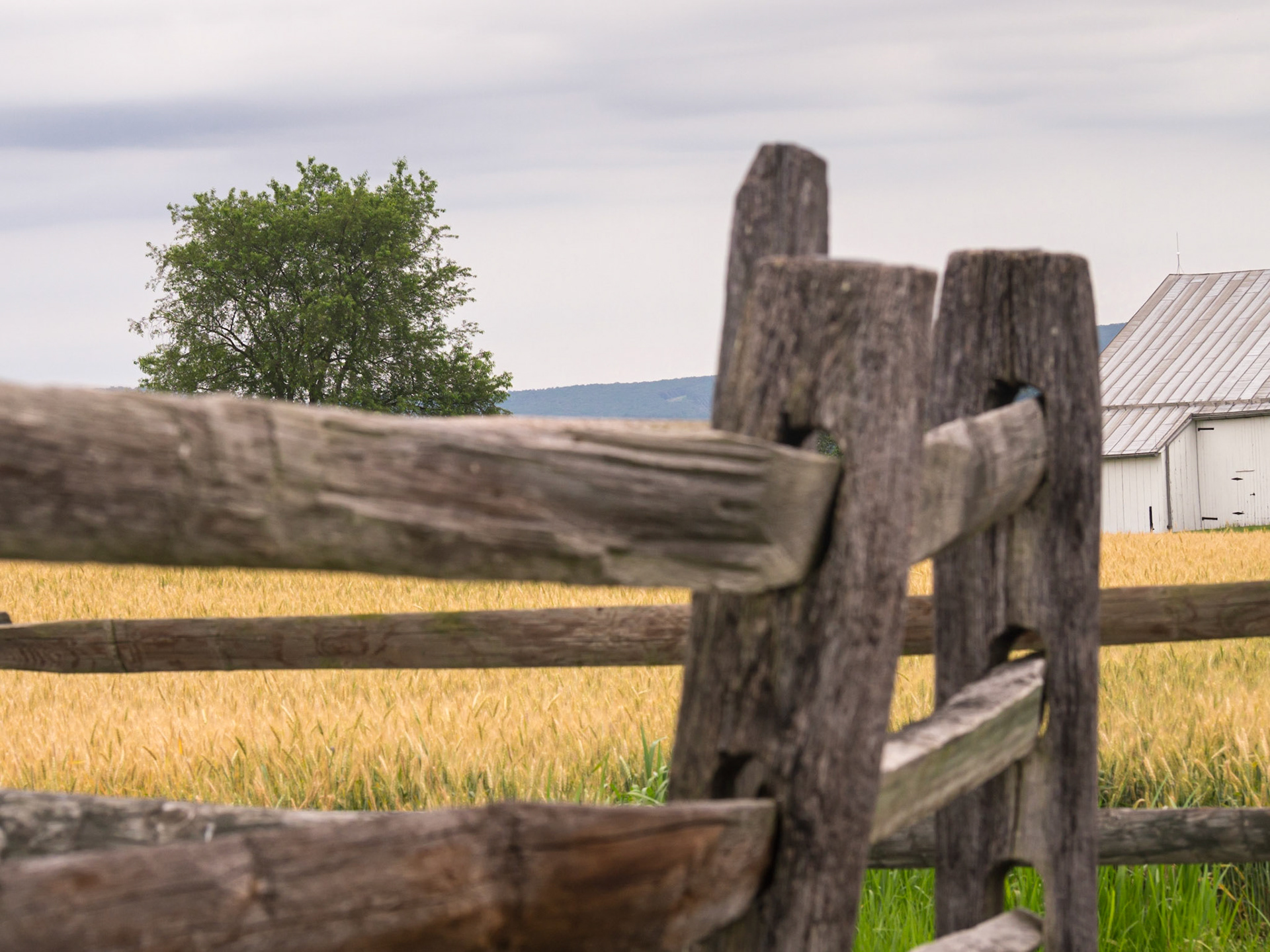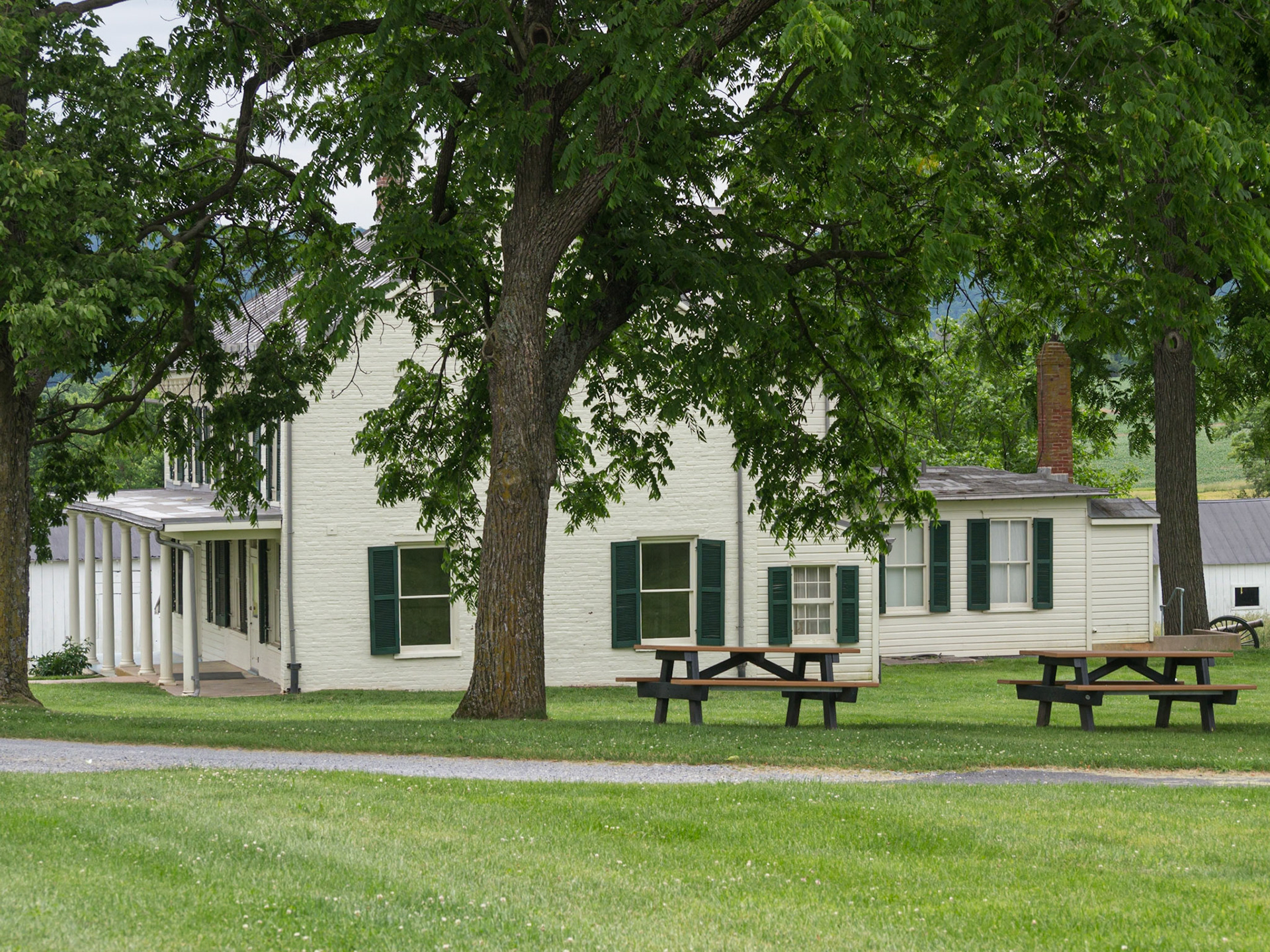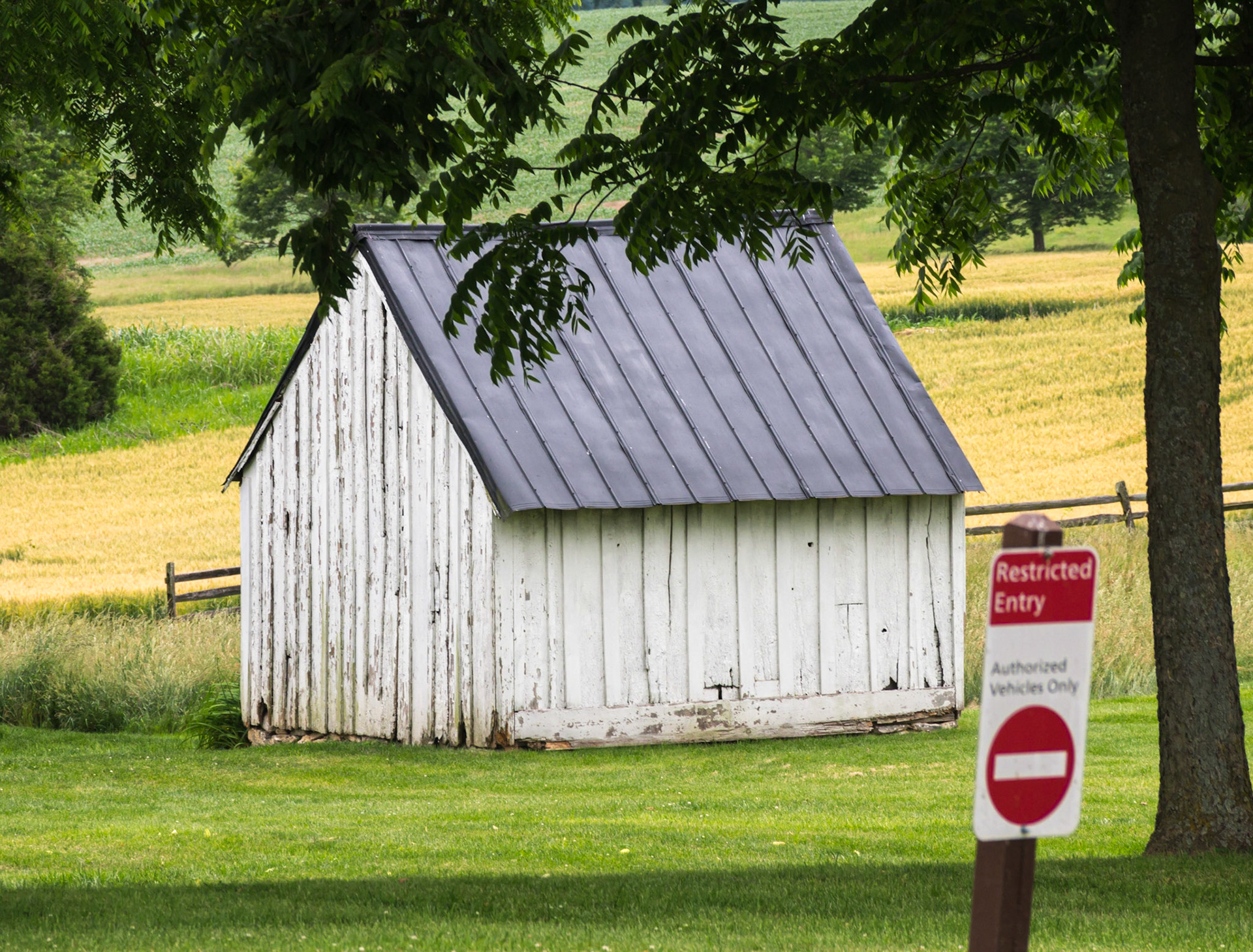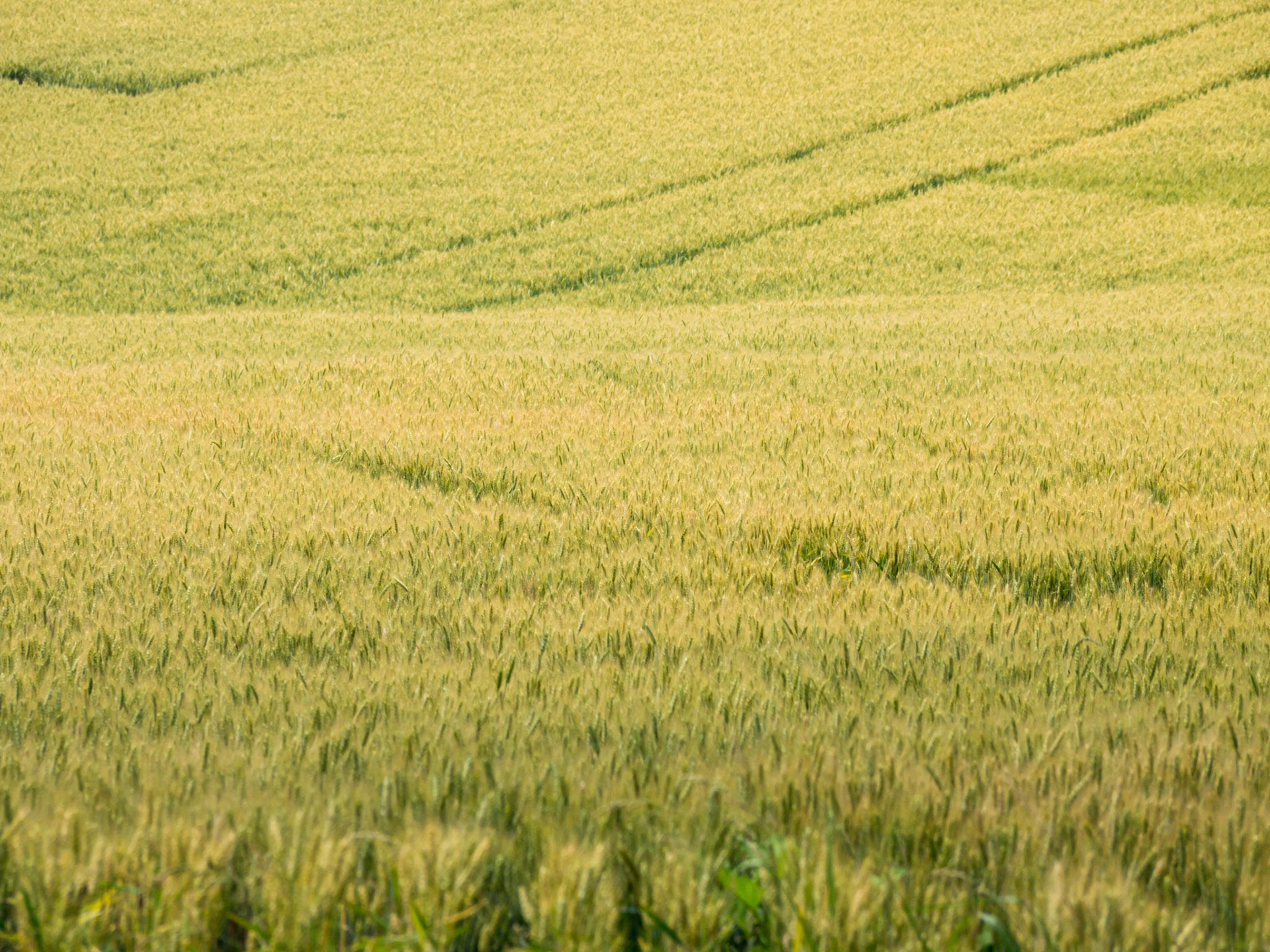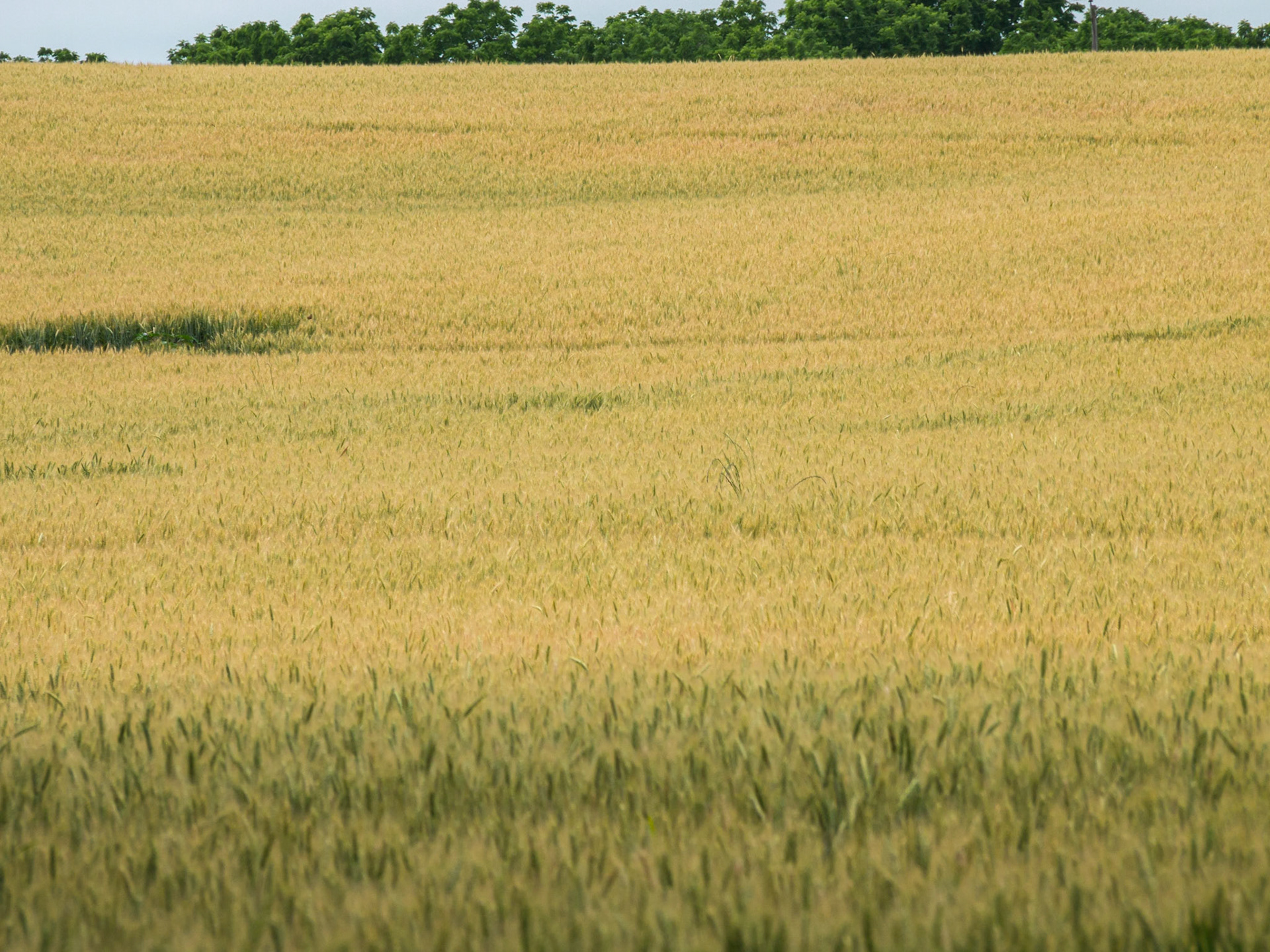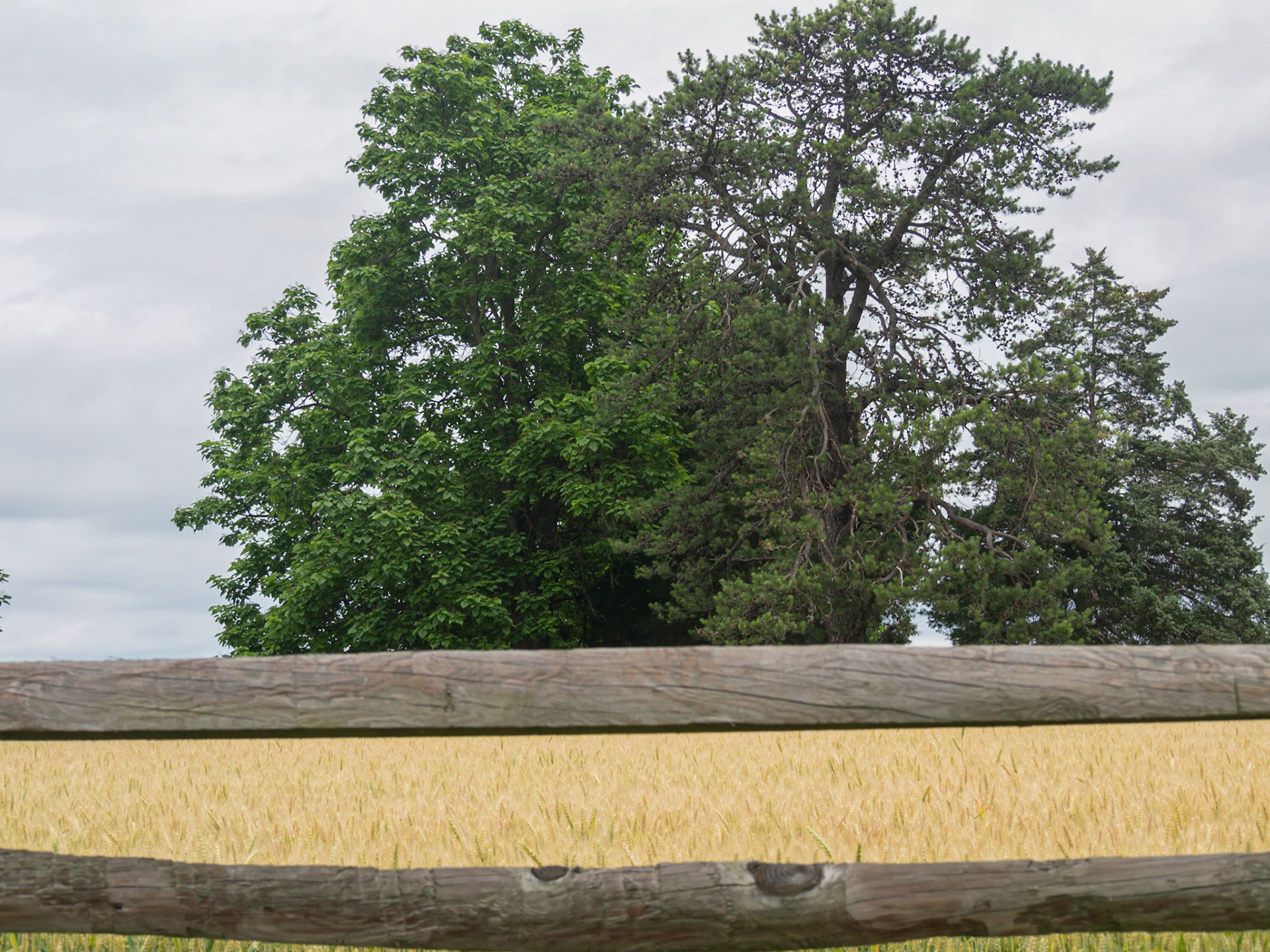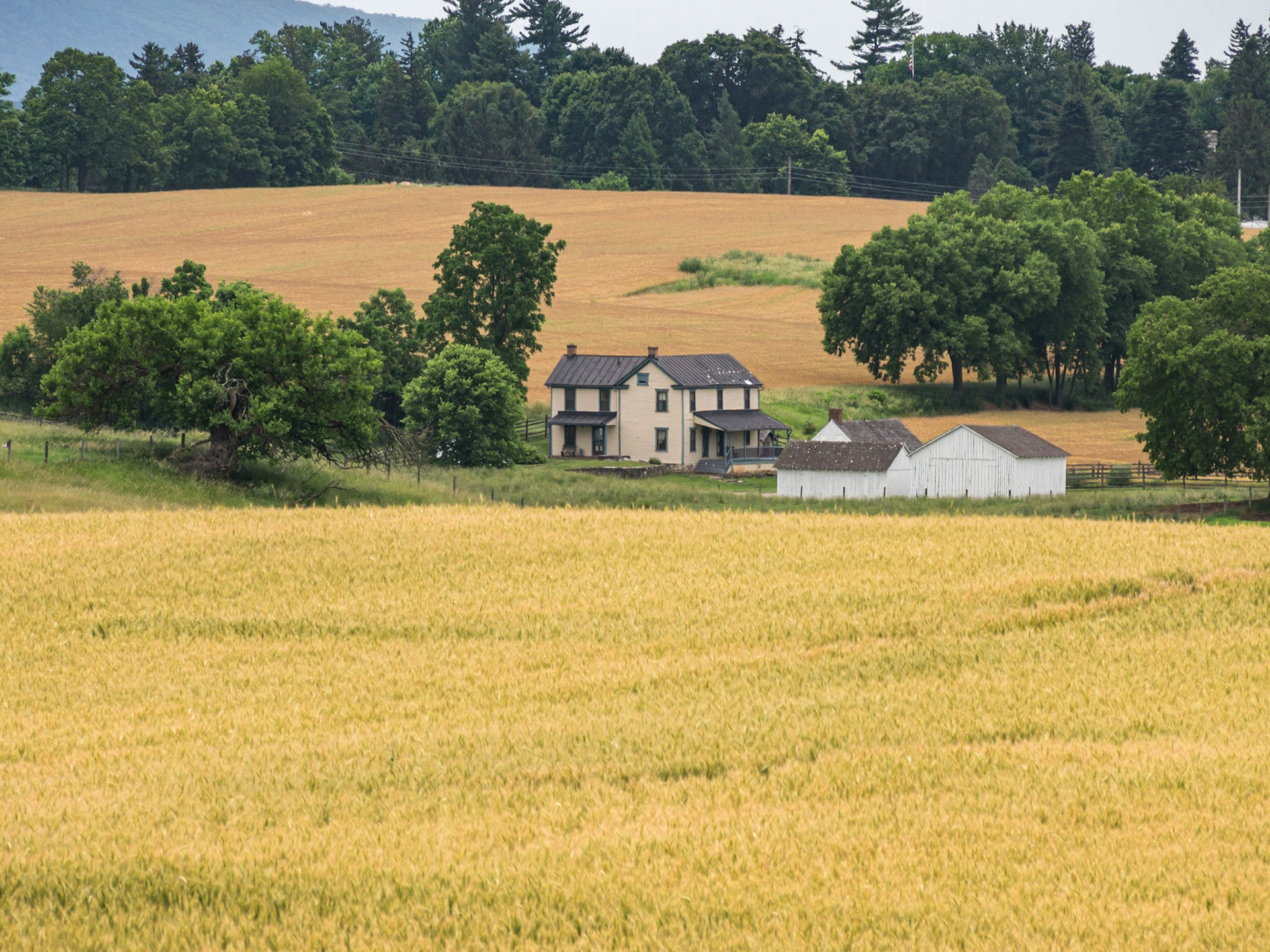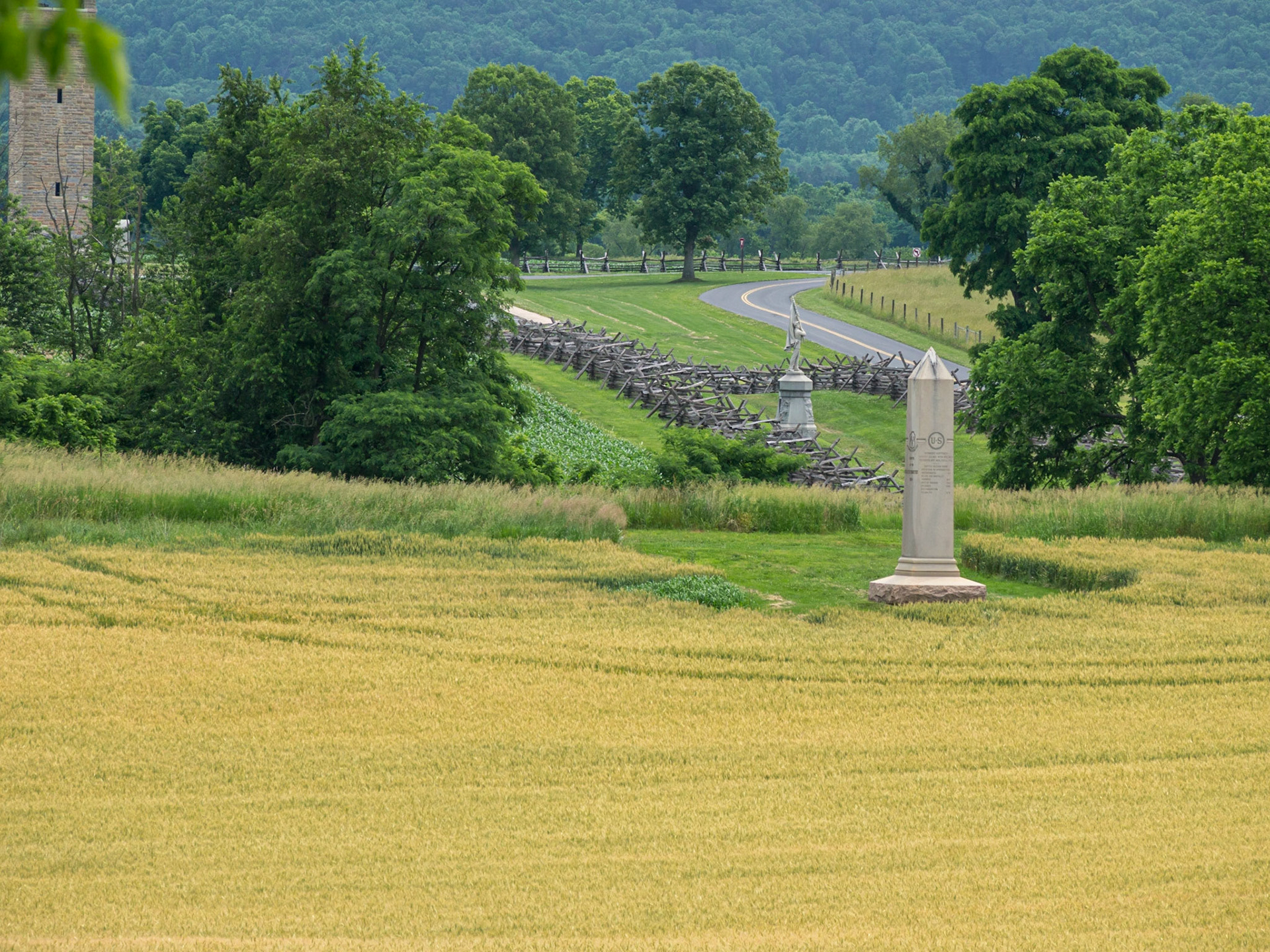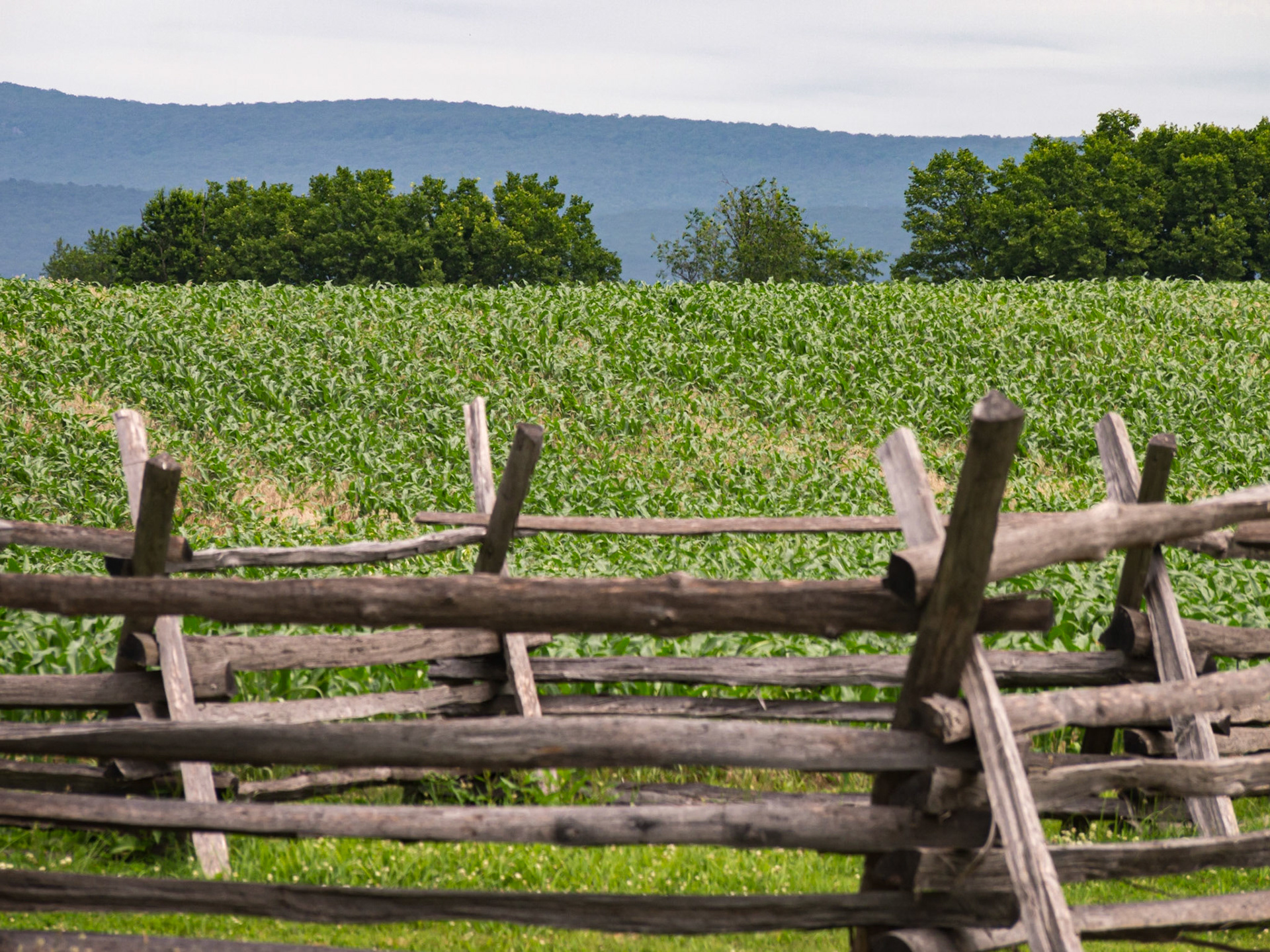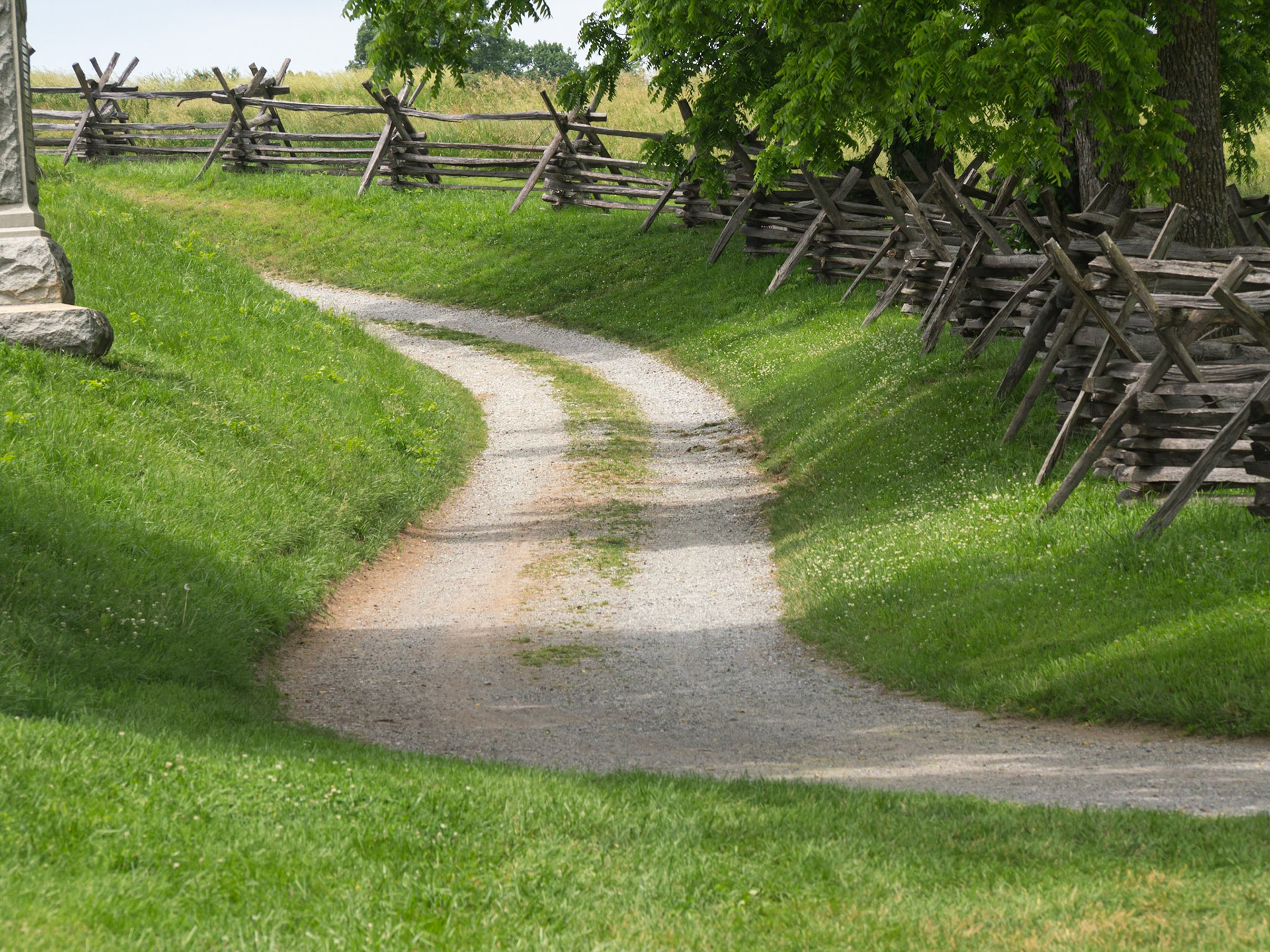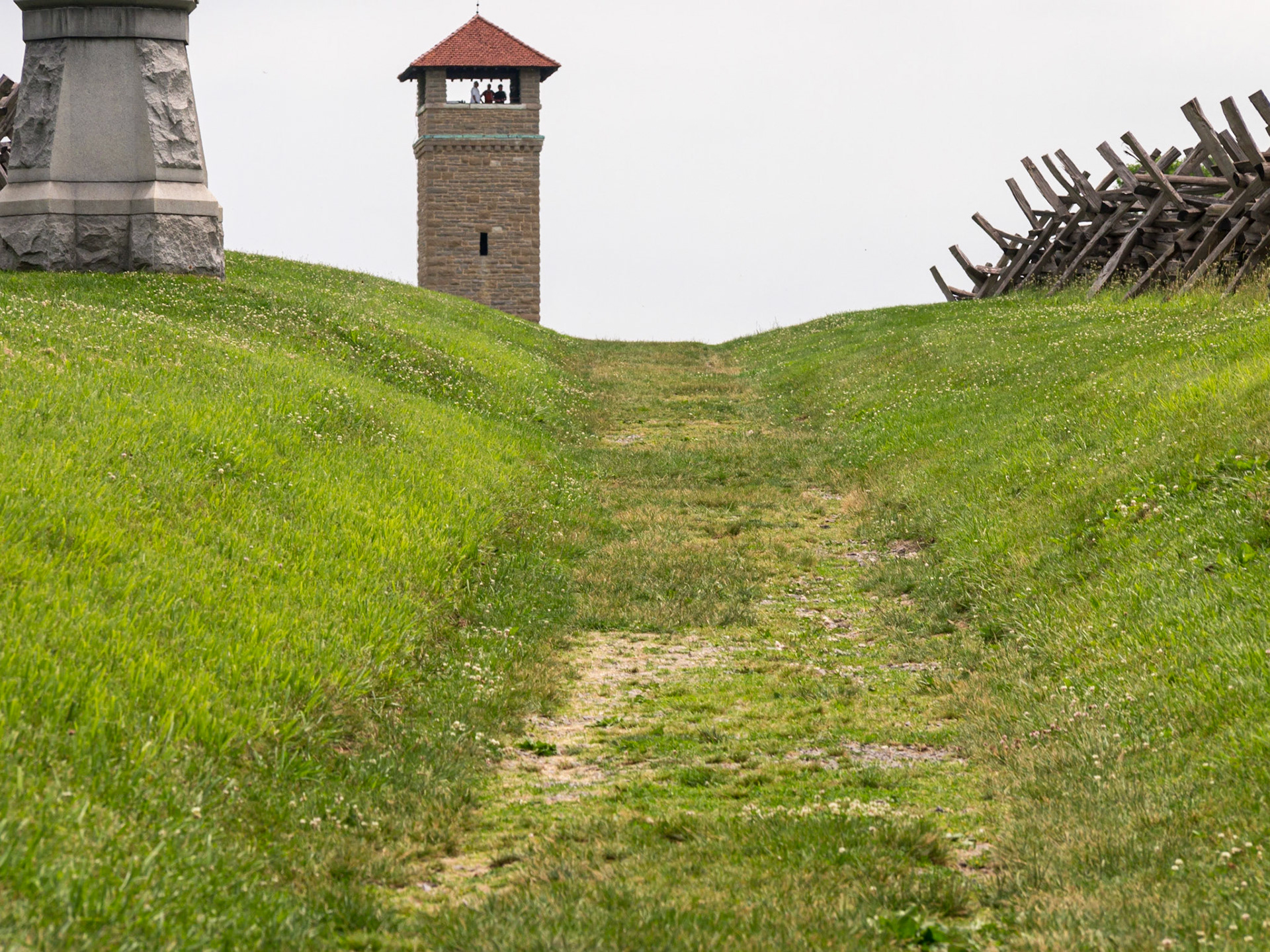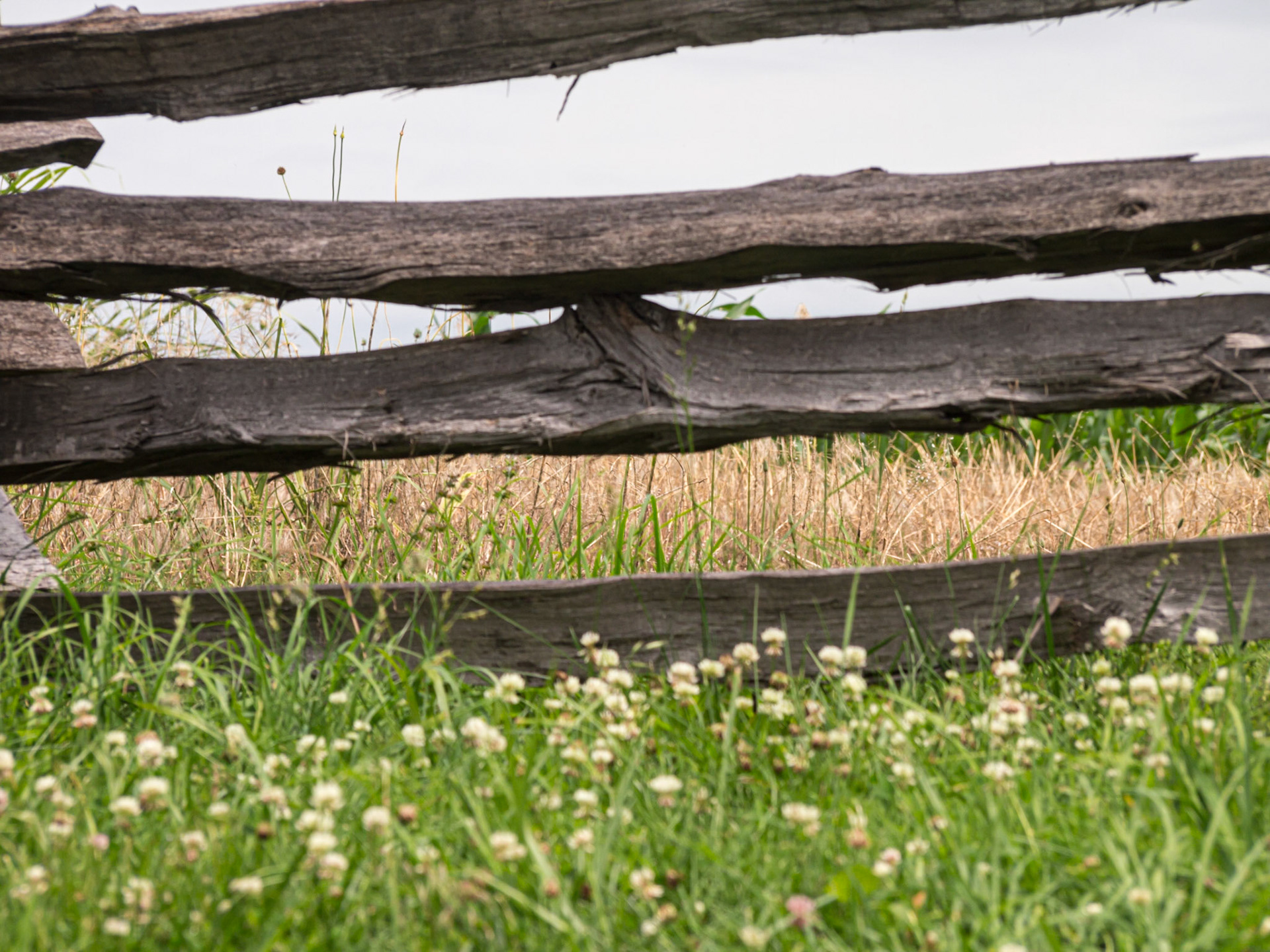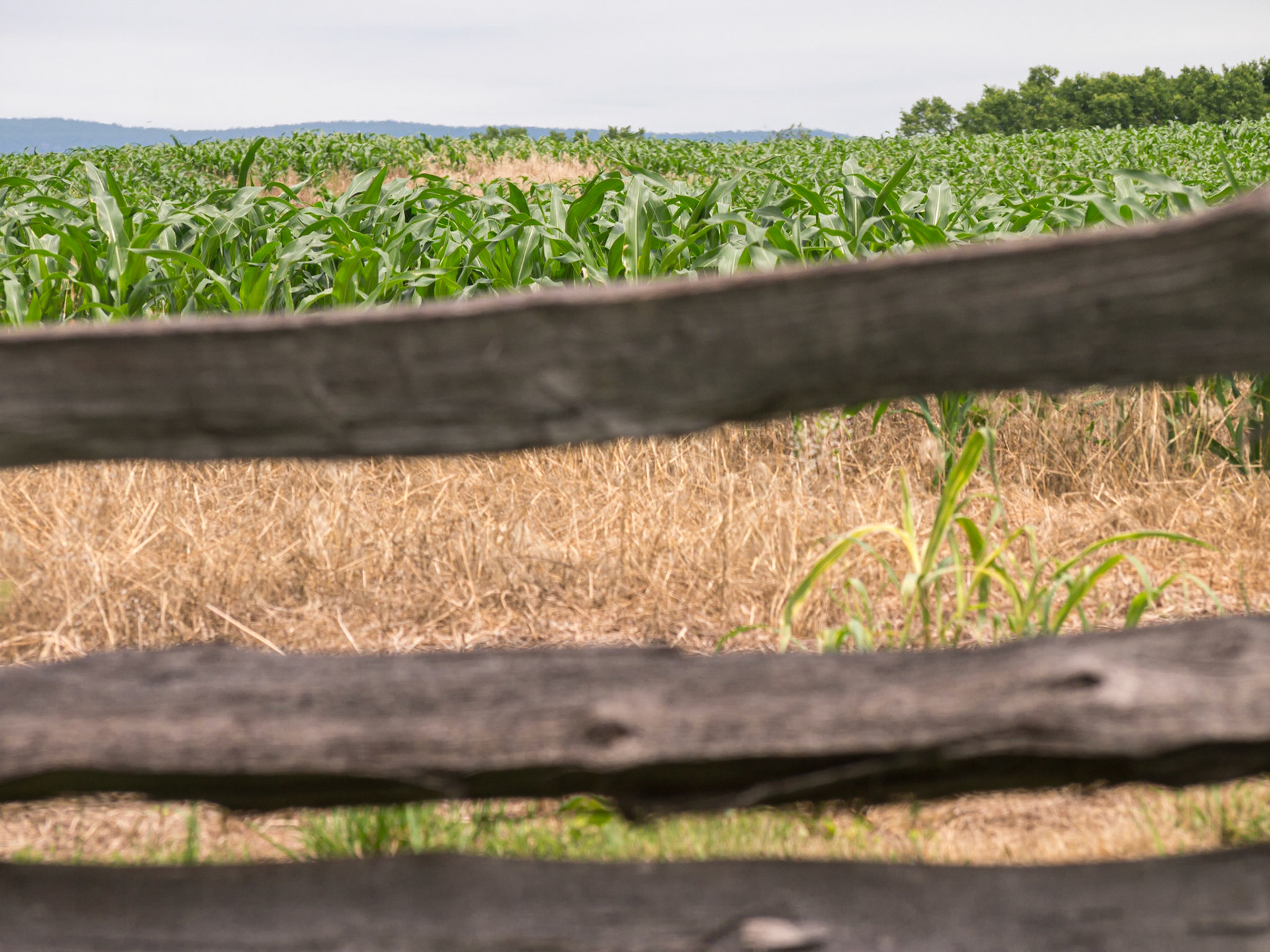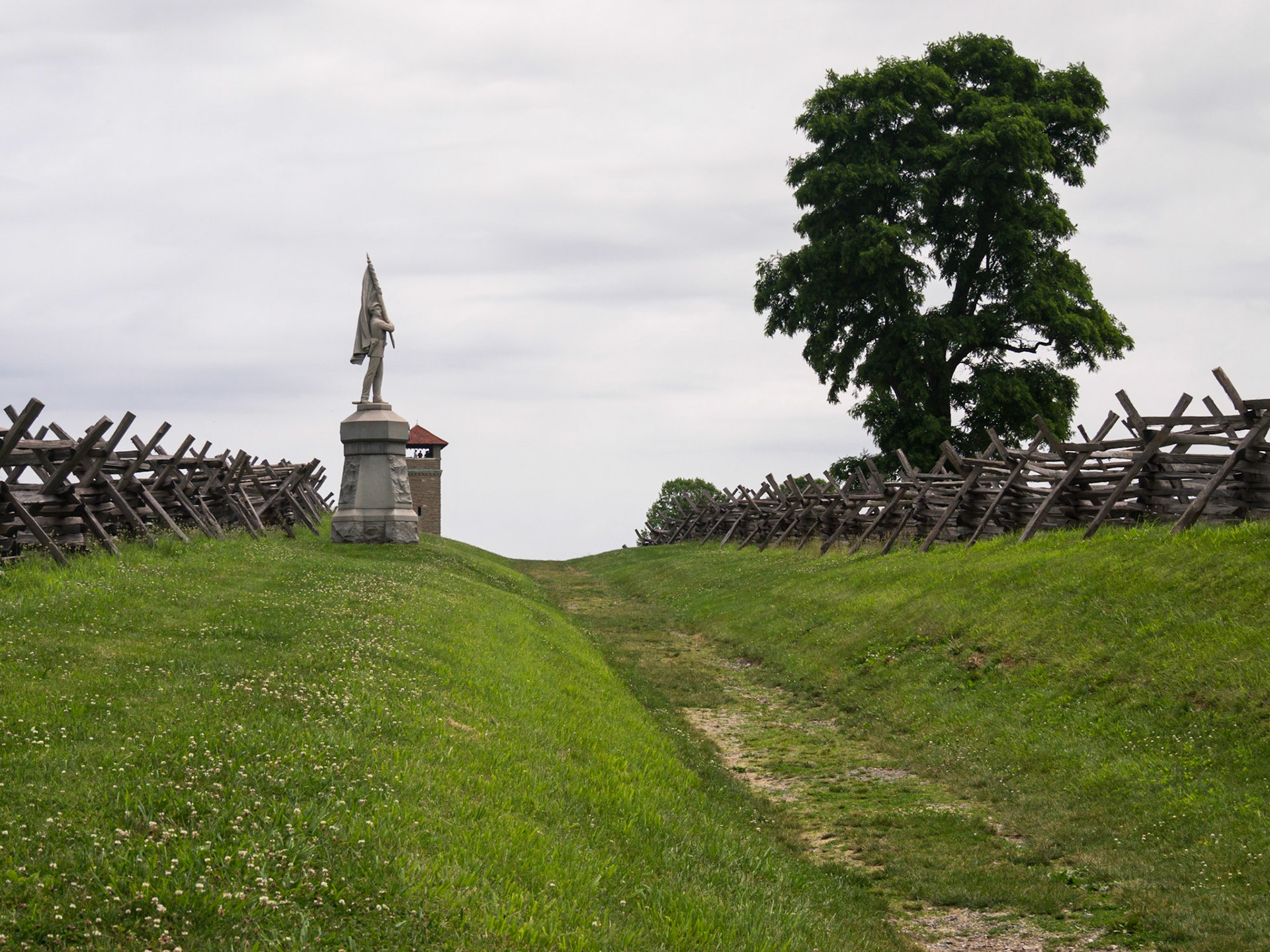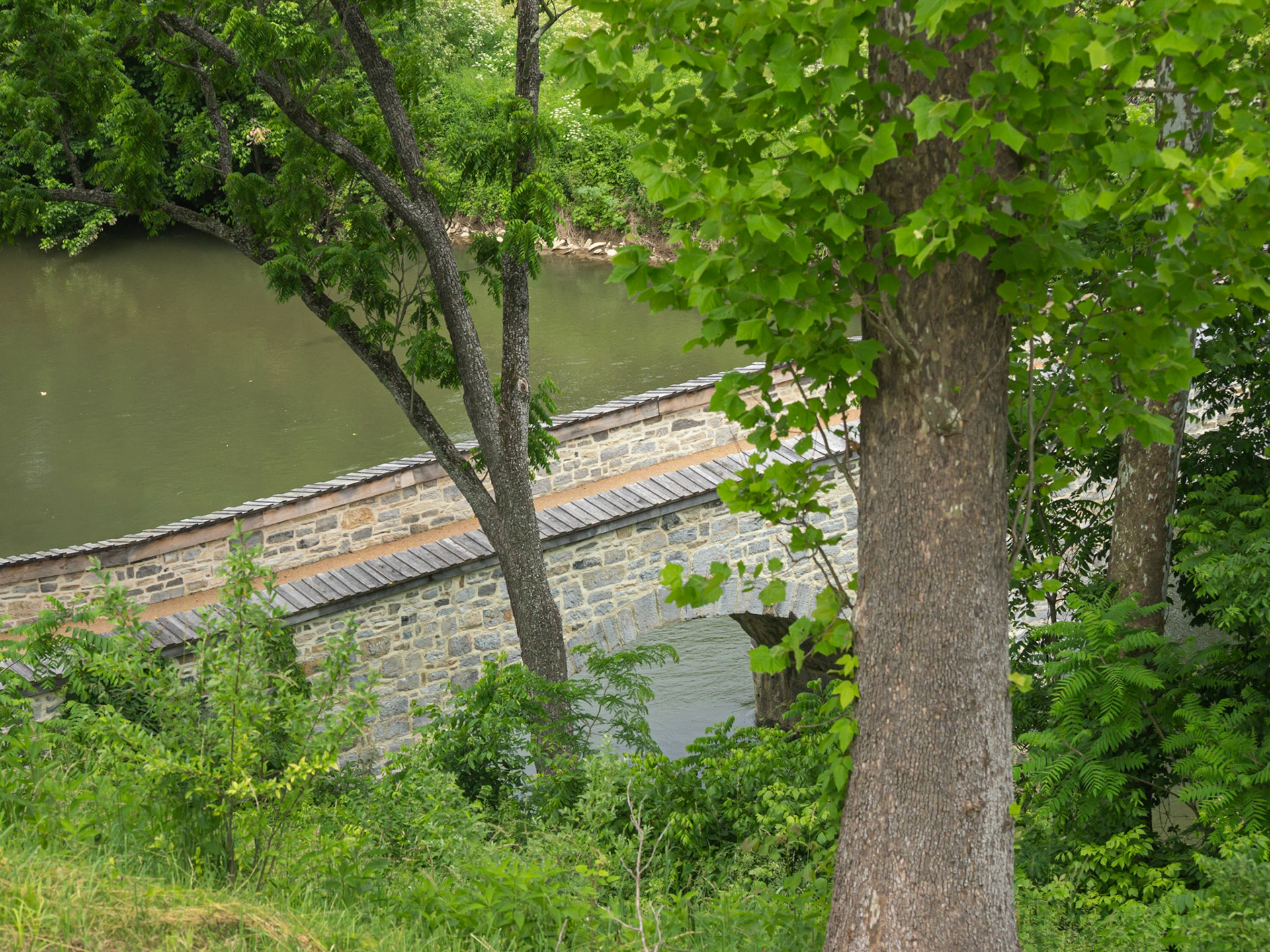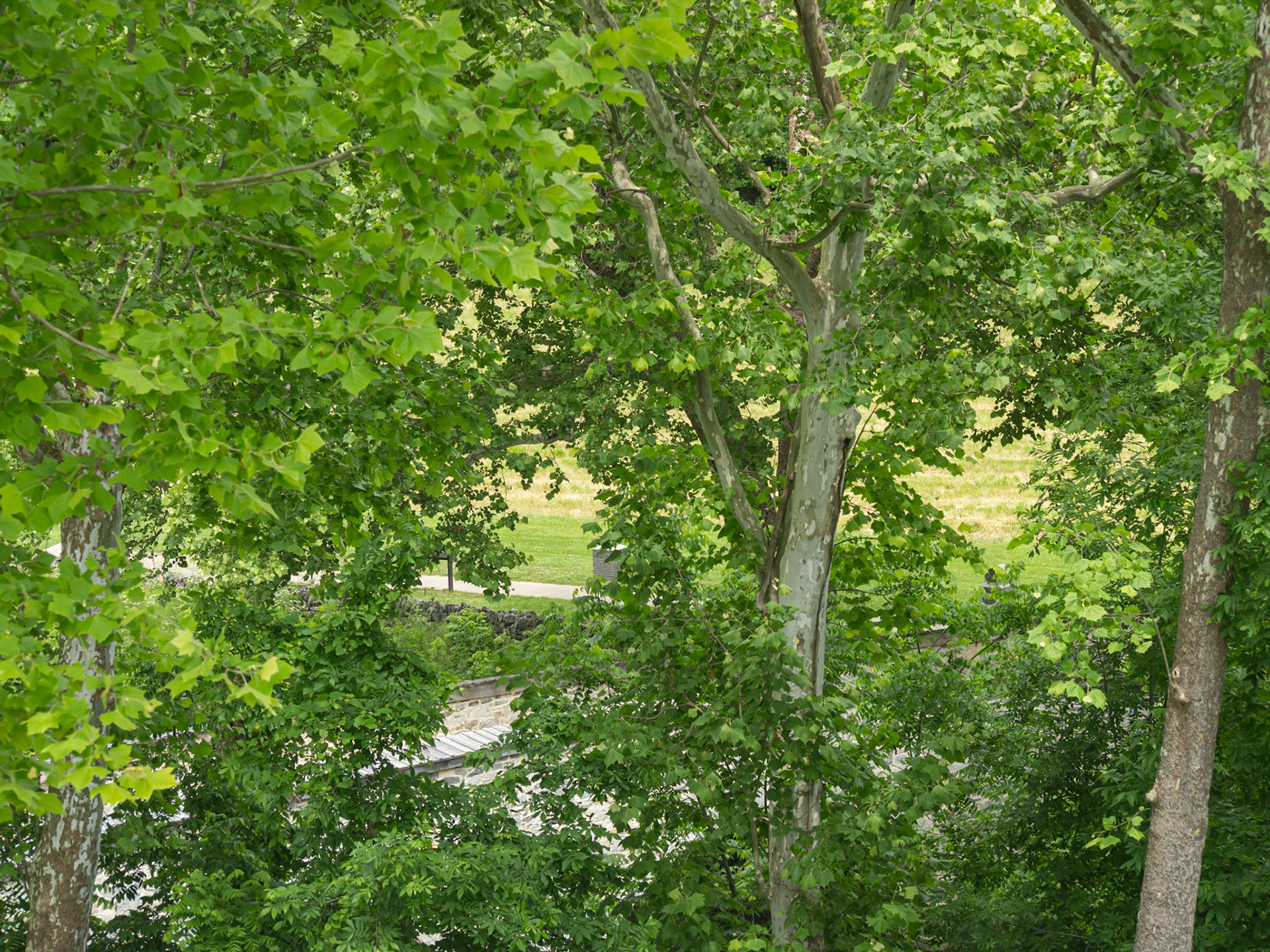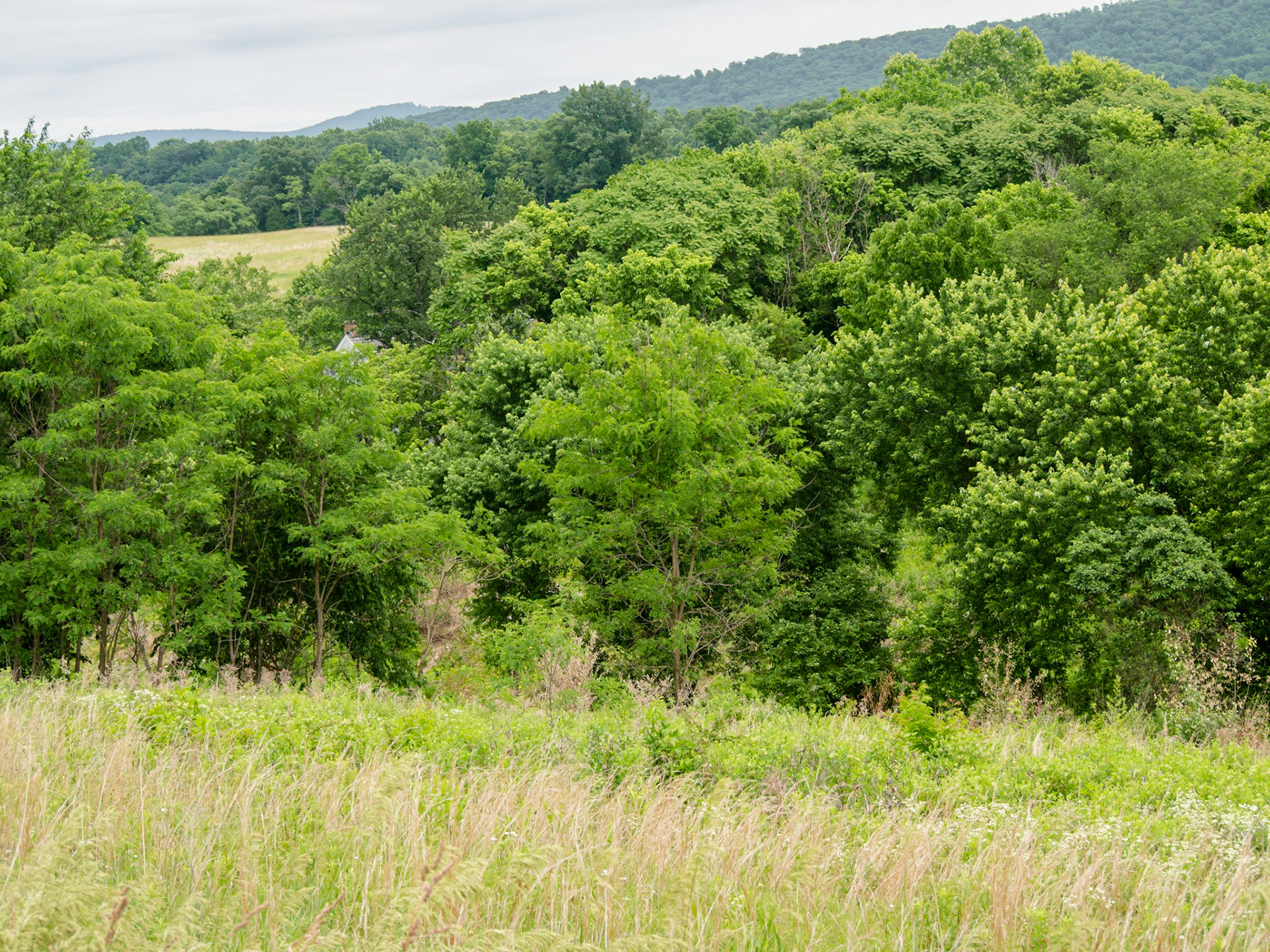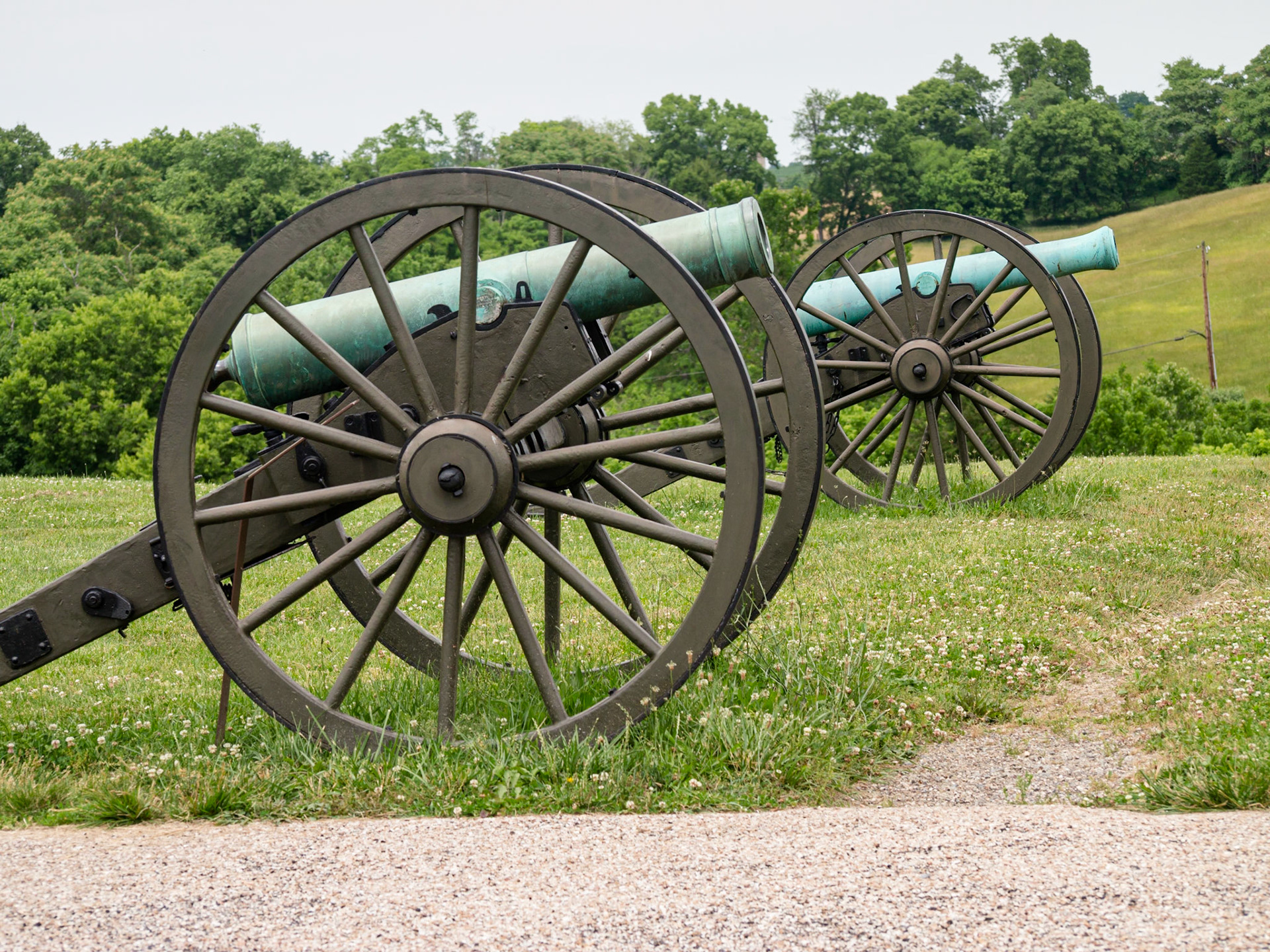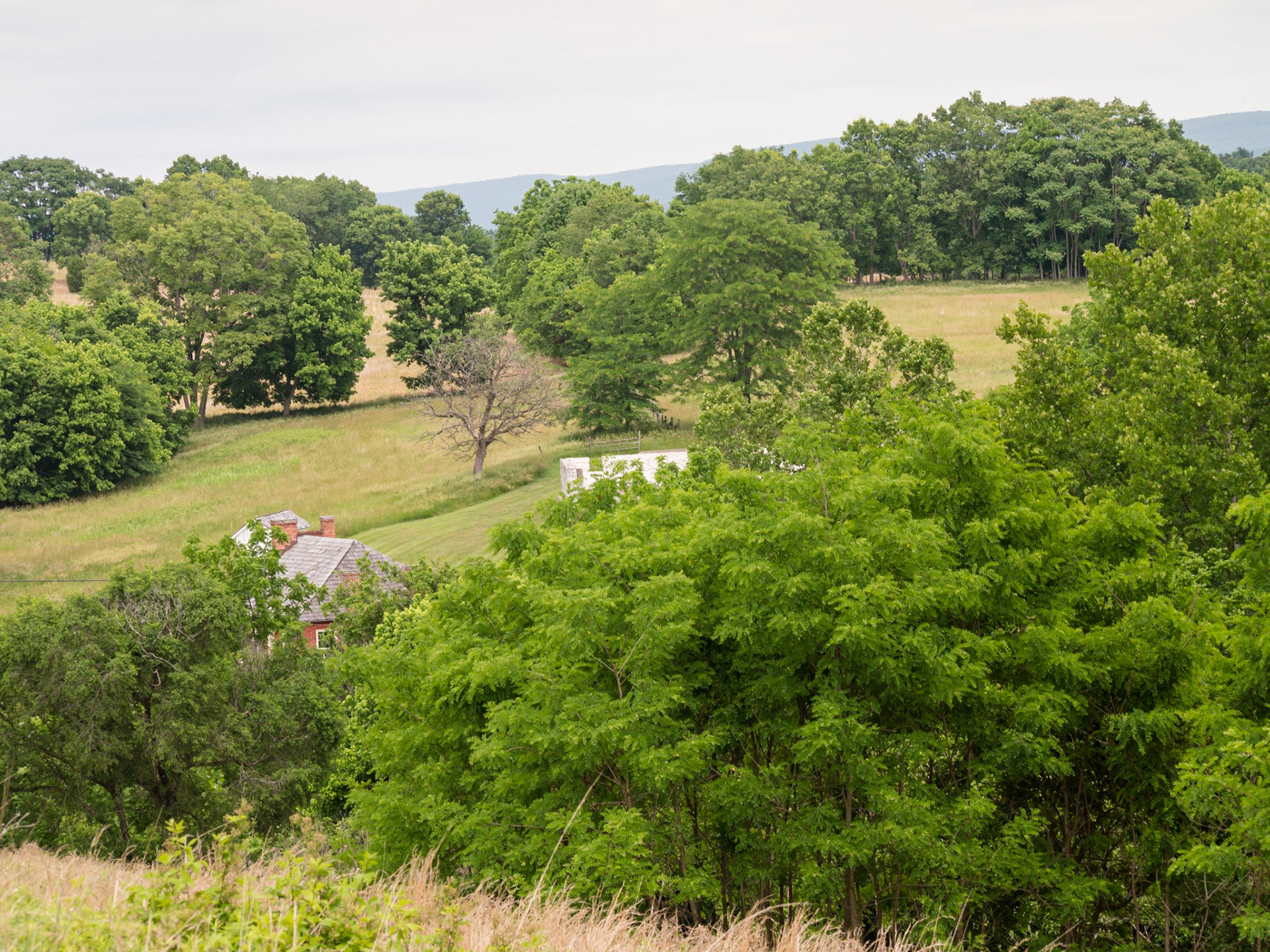
Looking across the battlefield from the terrace

From the lookout toward the sunken road with the observation tower at the end.

Cannon from the lookout

Toward South Mountain, where the previous battle was fought

Panoramic view of the battlefield from the lookout

More of the battlefield from the lookout

A closer view of South Mountain

One of the many monuments on the field. Most are Union monuments; the post-war Confederacy was too poor to erect monuments

Another monument

The Dunker (German Baptist) church. It was at the center of the activity that day. The building is a reconstruction. The original blew down in a storm in the 1920s.

View from the Dunker Church

View east toward South Mountain

Front view of the Dunker Church

Interior of the Dunker Church. Very plain.

Looking east from across the street from the Dunker Church

Description of the role played by Clara Barton, who came on the scene at Antietam.

Monument honoring Clara Barton

Northern end of the battlefield. Fighting began here in the pre-dawn hours of the day.

North end of the battlefield

North end of the battlefield

The East Woods, scene of fierce early morning fighting

The East Woods

Sign explaining the cornfield. A twenty-four acre plot that is the bloodiest spot in the nation.

The cornfield. This twenty-four acre plot is the scene of America’s deadliest battle. For hours on that morning, the field changed hands over and again, each time with massive loss of life. When it was done, said Stonewall Jackson, you could cross the field without stepping on earth; it was covered with bodies, most still writhing.

The cornfield. This twenty-four acre plot is the scene of America’s deadliest battle. For hours on that morning, the field changed hands over and again, each time with massive loss of life. When it was done, said Stonewall Jackson, you could cross the field without stepping on earth; it was covered with bodies, most still writhing.

The cornfield. This twenty-four acre plot is the scene of America’s deadliest battle. For hours on that morning, the field changed hands over and again, each time with massive loss of life. When it was done, said Stonewall Jackson, you could cross the field without stepping on earth; it was covered with bodies, most still writhing.

The cornfield. This twenty-four acre plot is the scene of America’s deadliest battle. For hours on that morning, the field changed hands over and again, each time with massive loss of life. When it was done, said Stonewall Jackson, you could cross the field without stepping on earth; it was covered with bodies, most still writhing.

Fence at the south end of the cornfield

Fence at the cornfield

Another memorial

The West Woods. Union troops ventured across the Hagerstown Pike into the West Woods, but were shredded. For the remainder of the battle, they stayed east of the Pike.

The West Woods. Union troops ventured across the Hagerstown Pike into the West Woods, but were shredded. For the remainder of the battle, they stayed east of the Pike.

Another field

This house was torched by Confederate forces to prevent it being used by Union sharpshooters. It was rebuilt a year later, in 1863

This was the only structure on the property to not be torched by the Confederate army.

The killing fields

The killing fields

The killing fields

The killing fields

The killing fields

The sunken road, from behind

The Sunken Road. Sunken below the surrounding fields, for whatever reason, this lane provided a natural snipers pit that Confederate troops made use of. Thousands of Union soldiers came from the north, and as they crested the field immediately north of the lane, they were mowed down. At length the Union gained the lane, and the soldiers who had been firing from the lane were bayoneted to death. This part of the lane is still in use.

The Sunken Road. Sunken below the surrounding fields, for whatever reason, this lane provided a natural snipers pit that Confederate troops made use of. Thousands of Union soldiers came from the north, and as they crested the field immediately north of the lane, they were mowed down. At length the Union gained the lane, and the soldiers who had been firing from the lane were bayoneted to death. The observation tower sits at the end of the lane.

Snipers view from the sunken road

Snipers view from the sunken road. When Union forces crested the hill straight ahead, they were mowed down.

More of the sunken road

All day the Confederate Army held the heights where I am standing. In mid-afternoon, Union soldiers, perceiving a lull in the firing, stormed the bridge and the heights, finishing off the Confederates for the day.

All day the Confederate Army held the heights where I am standing. In mid-afternoon, Union soldiers, perceiving a lull in the firing, stormed the bridge and the heights, finishing off the Confederates for the day.

The Heights

The Heights. Having gained the heights, Union troops imagined they had gained the upper hand. Just then fresh Confederate troops arrived from Harpers Ferry. It was late in the day, and both sides fought until dark. The day’s battles had resulted in more or less a draw, with colossal losses on both sides—more than any other day in American history.

After the final battle, the two sides retired. Fighting did not resume the next day, or ever again. Lee retired across the Potomac; his foray into Union territory had been futile and and had resulted in catastrophic losses that the Confederacy would never recover from. A year later, as Confederate troops crossed the Antietam battlefield on their way to Gettysburg, they found the battlefield littered with unburied skeletons bleaching in the sun. Lincoln, for his part, used Lee’s discomfiture to issue the Emancipation Proclamation.
